Things we like
- Spacious and practical
- Big model range
- Unique hybrid system
Not so much
- Average petrol engine
- Limited hybrid availability
- Short service intervals
The Nissan X-Trail, now in its fourth generation, remains hugely popular as a medium SUV option in Australia, selling 17,494 vehicles in 2024 – a 36 percent increase on 2023.
Initially launched in petrol-only form, Nissan added ‘e-Power’ hybrid models in 2023 to capitalise on Australia’s growing love for hybrid drivetrains. With a wide variety of available models and drivetrains, is the X-Trail the best option for a medium SUV?
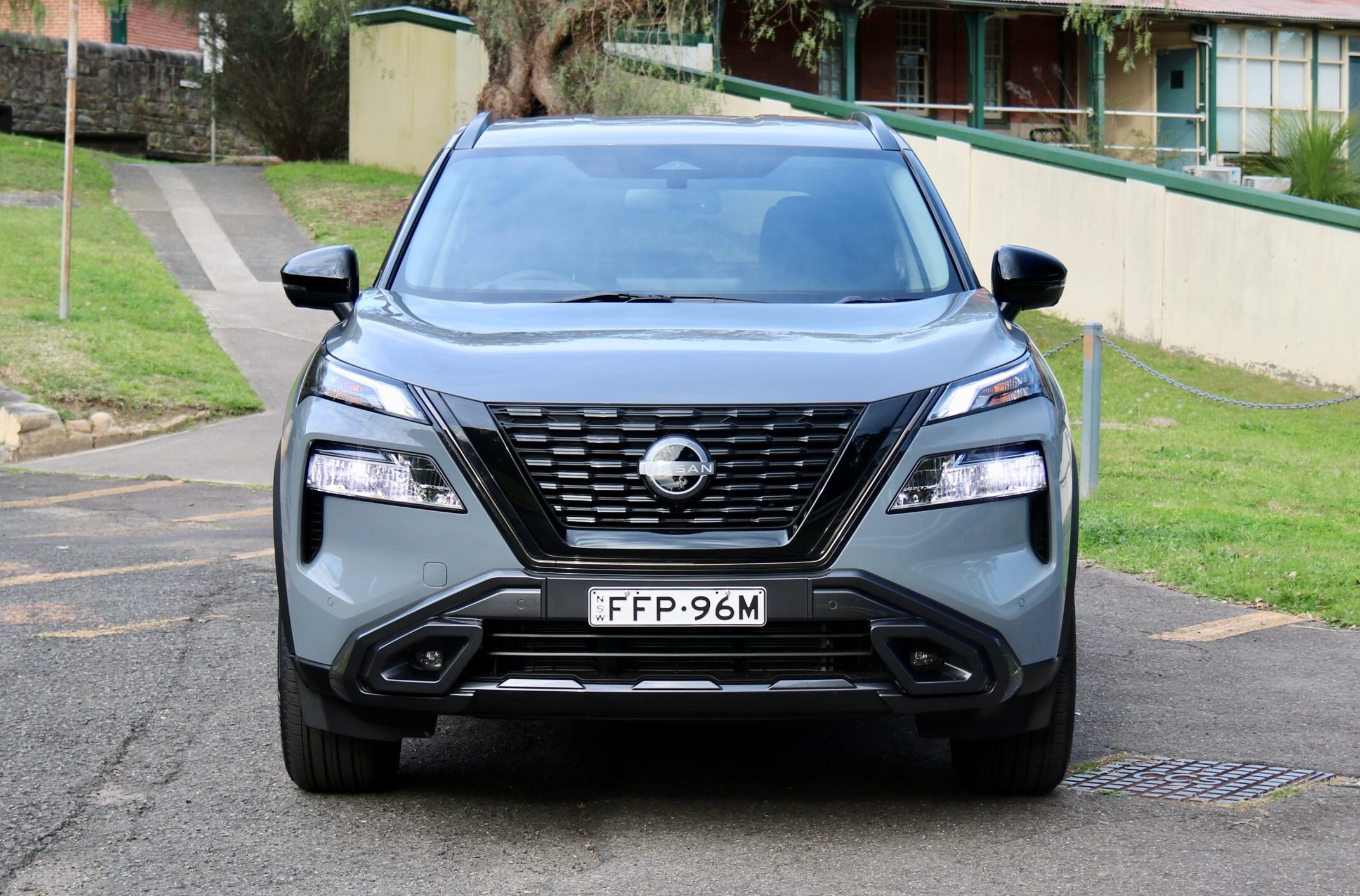
How much does the Nissan X-Trail cost?
- ST 2WD 5-seat: $38,025
- ST AWD 7-seat: $41,065
- ST-L 2WD 5-seat: $44,465
- ST-L AWD 7-seat: $47,565
- ST-L e-Power hybrid AWD 5-seat: $50,765
- N-Trek 2WD 5-seat: $48,065
- N-Trek AWD 7-seat: $51,165
- Ti AWD 5-seat: $51,265
- Ti e-Power hybrid AWD 5-seat: $55,465
- Ti-L AWD 5-seat: $54,265
- Ti-L e-Power AWD 5-seat: $59,265
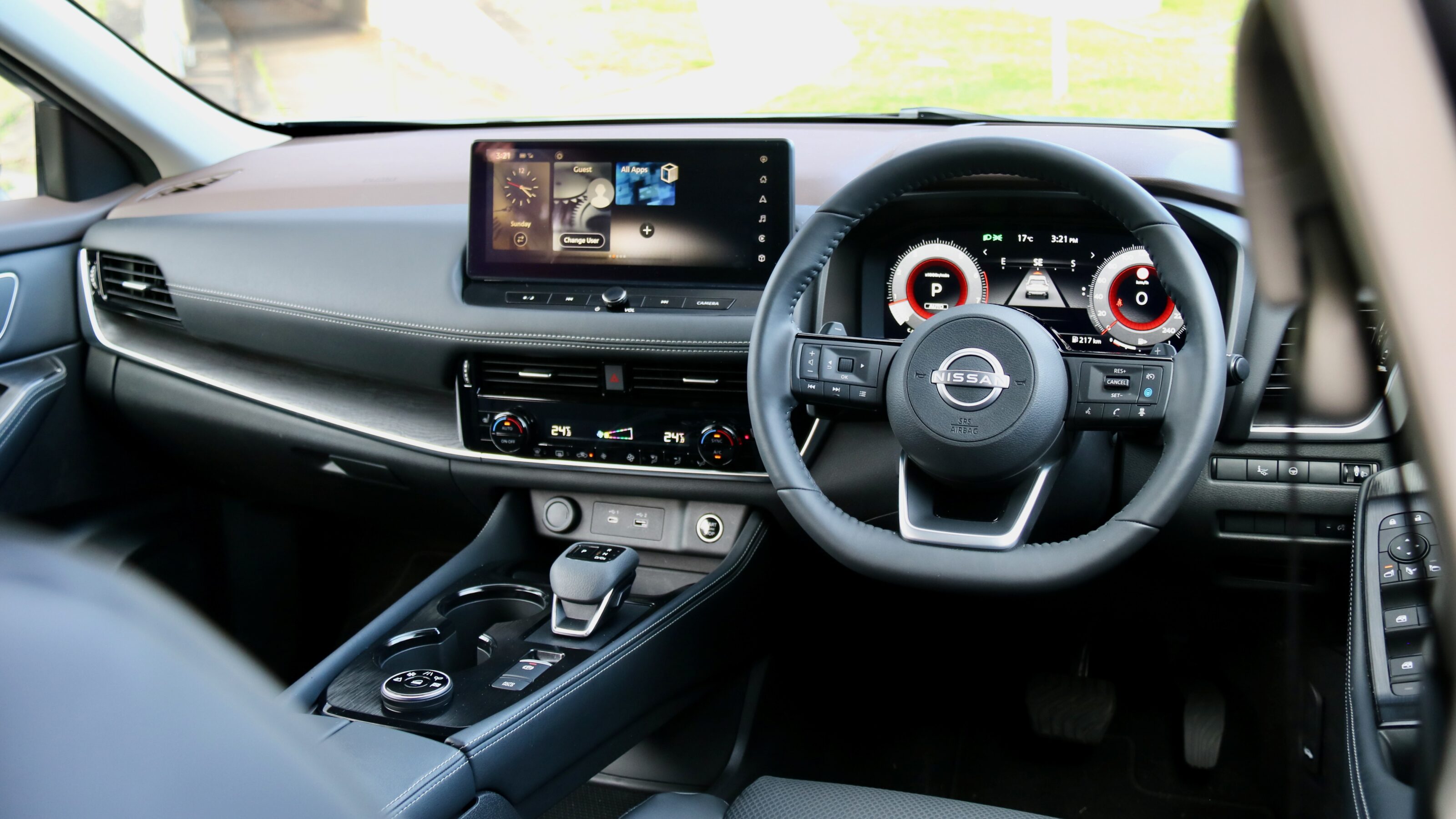
What features are standard in the Nissan X-Trail range?
X-Trail ST standard equipment:
- 17-inch alloy wheels
- Dusk- and rain-activated automatic LED headlights
- Roof rails
- Heated and auto-folding mirrors
- Keyless entry and push button start
- Cloth upholstery
- Lumbar adjustment for the driver’s seat
- Manual air-conditioning with rear air vents
- 8.0-inch touchscreen
- 7.0-inch digital driver’s display
- Wired Apple CarPlay and Android Auto
- Six-speaker sound system
- 4x USB ports
Safety features:
- Seven airbags (including a front centre unit)
- Autonomous emergency braking with pedestrian, cyclist and intersection assist
- Lane keep assist with lane departure warning
- Adaptive cruise control
- Rear auto braking
- Traffic sign recognition
- Rear exit alert
- Driver attention monitoring
- Blind-spot monitoring
- Rear cross-traffic alert
- Rear parking sensors
- Reversing camera
- Auto high beam
- Hill descent control (all-wheel drive only)
The X-Trail range achieved a five-star ANCAP safety rating in 2021 with scores of 91% in adult occupancy protection, 90% for child occupancy protection, 74% in vulnerable road user protection and 97% in safety assist.
X-Trail ST-L model adds:
- Larger 18-inch alloy wheels
- Dual-zone automatic climate control
- Leather steering wheel and upholstery
- Heated front seats
- 10-way electric driver’s seat
- 12.3-inch touchscreen
- Wireless Apple CarPlay and Android Auto
- LED front fog lights
- Front parking sensors
- 360-degree camera
- Sliding 40:20:40-split rear seat bench
- Adaptive lane guidance
- Tyre pressure monitoring
- Auto-dimming rear mirror
- Satellite navigation
- ‘Divide-N-Hide’ cargo management system (five-seat)
- Rear privacy glass
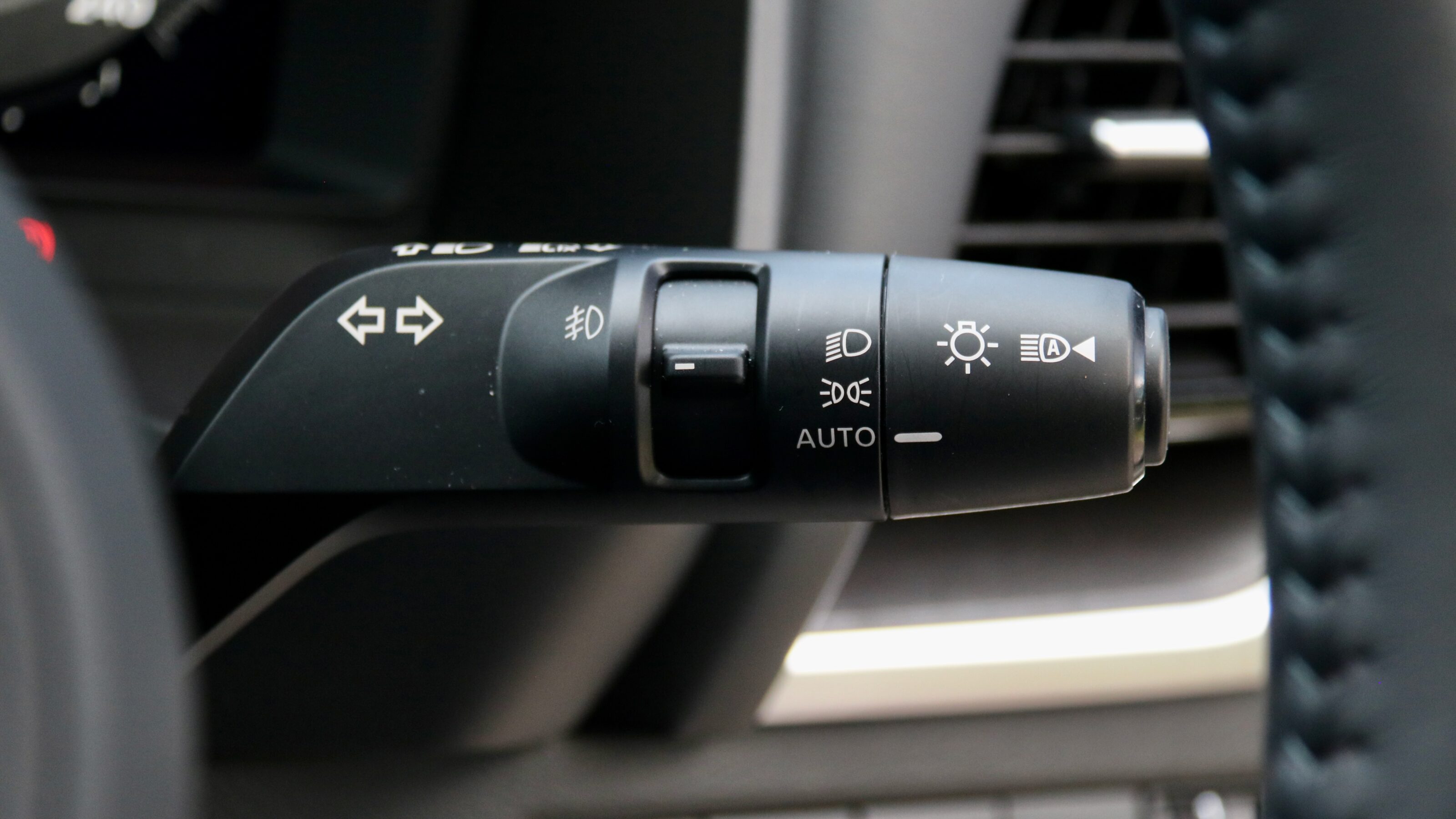
X-Trail N-Trek model (shown in photos) adds:
- Off-road wheels and bumpers
- 10.8-inch head-up display
- Water-resistant upholstery
- 12.3-inch digital driver’s display
- Automatic wipers
X-Trail Ti model adds:
- Adaptive high beam
- Panoramic sunroof
- Power tailgate
- 10-way electric front passenger seat
- Ambient lighting
- Tri-zone automatic climate control
- Camera rear mirror
X-Trail Ti-L model adds:
- Nappa leather upholstery
- Heated steering wheel and rear seats
- 10-speaker Bose sound system
- Rear door sunshades
- Hands-free tailgate functionality
- Memory for the driver’s seat and mirrors
- Remote start
- 20-inch alloy wheels (hybrid only)
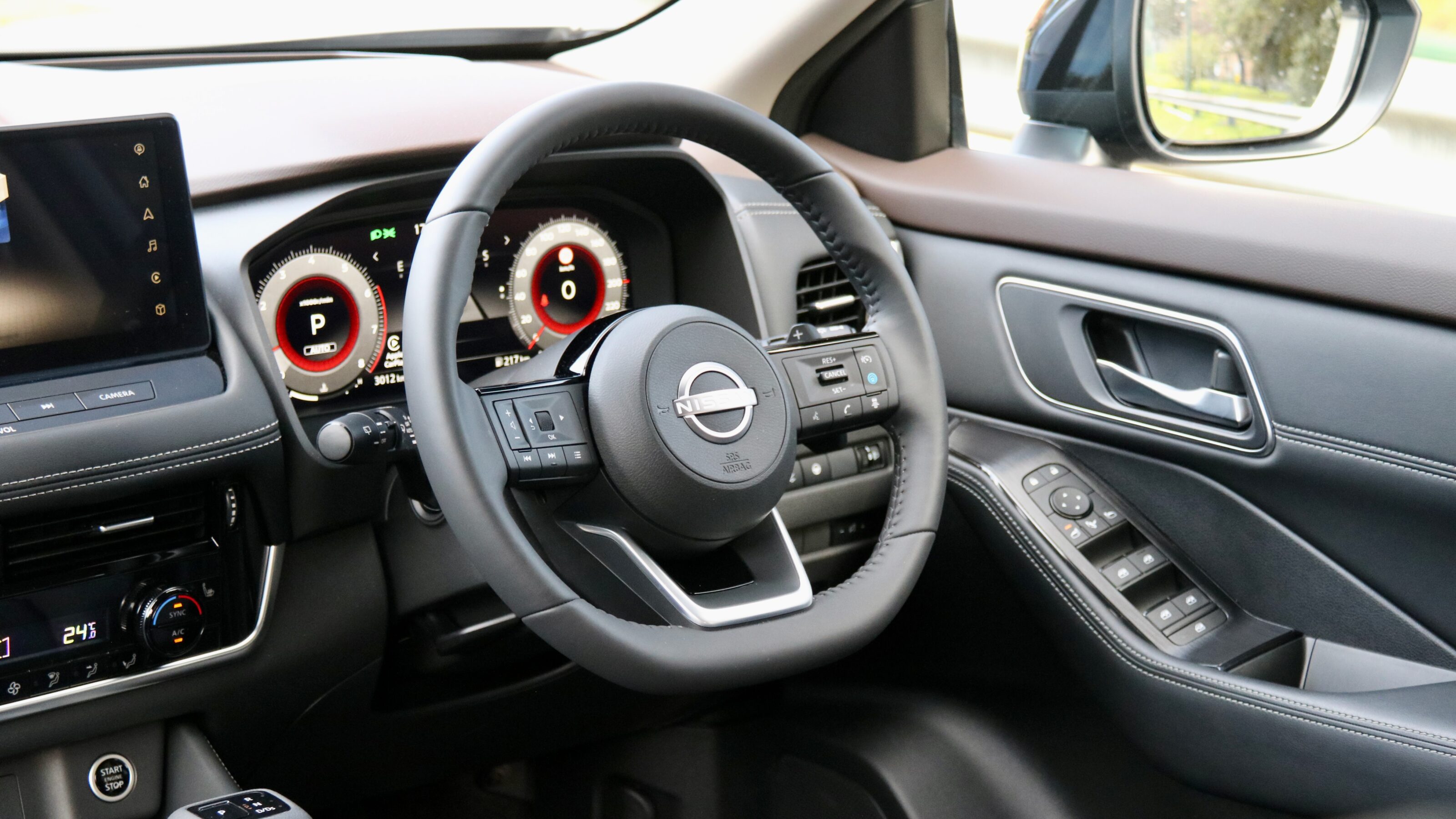
How comfortable and practical is the Nissan X-Trail?
The X-Trail offers buyers an impressively high-quality interior and levels of comfort among the best in this category – even the entry-level ST includes lots of soft touch surfaces across its cabin, while the top-spec Ti L is downright plush thanks to its quilted Nappa leather and quality stitching.
The X-Trail’s cabin is also quite practical with plenty of storage, including a tray underneath the centre console, a large tray (with a wireless charger on the ST-L and upwards) ahead of the gear selector, large door bins and cup holders and a big box underneath the centre armrest.
The X-Trail ST uses a 8.0-inch touchscreen that uses Nissan’s older infotainment software, but the ST-L and above use a larger 12.3-inch screen that’s more intuitive and better featured with wireless smartphone mirroring and satellite navigation.
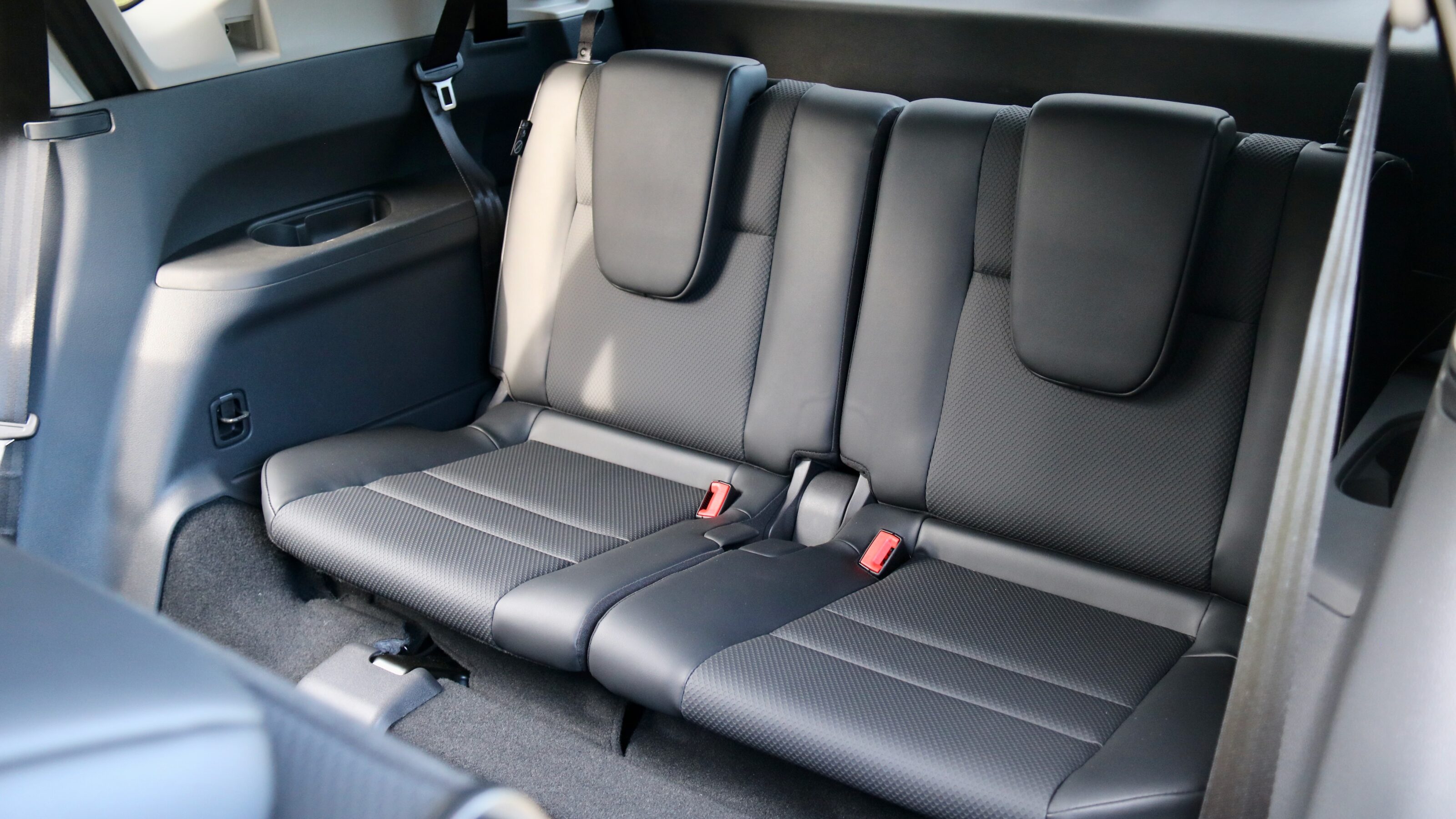
The middle seat of the X-Trail is impressively spacious and it’s well featured as even the base ST has charging ports, a centre armrest with cup holders and air vents. Move to the top-spec Ti-L and features like heated seats, a separate climate zone and even sunshades in the doors are standard kit.
If equipped, the third row in the X-Trail range is best described as ‘kids only’ as it’s a tight space for anybody over five feet tall. There are cup holders but no air vents. The X-Trail is better as a five-seater, in our opinion – if you need a more spacious third row of seating, Nissan will happily sell you a larger Pathfinder.
How big is the Nissan X-Trail?
The X-Trail measures 4,680mm long, 1,840mm wide, 1,725mm tall and rides on a 2,705mm long wheelbase – that makes it 80mm longer, 25mm narrower and 35mm taller than the RAV4. The X-Trail’s tare weight is a minimum 1,540kg for the base ST to 1,911kg for the Ti-L hybrid.
In seven-seat models, 177 litres of space is available behind the third row, which opens to 465L with the third row folded. Five-seat models expand that to 575L in hybrid models and 585L in the petrols. With all the seats down, that swells to 1,308L of capacity.
All petrol X-Trails are equipped with a space-saver spare, while all hybrids feature a tyre repair kit instead.
Will I enjoy driving the Nissan X-Trail?
If you’re looking for the best dynamics in the medium SUV space, a Mazda CX-5 fits that bill. The X-Trail is not sporty but instead, it’s very comfortable and rides quite well. It’s a relaxing drive – bumps rarely upset the suspension, the steering is pleasingly direct and road noise levels are low.
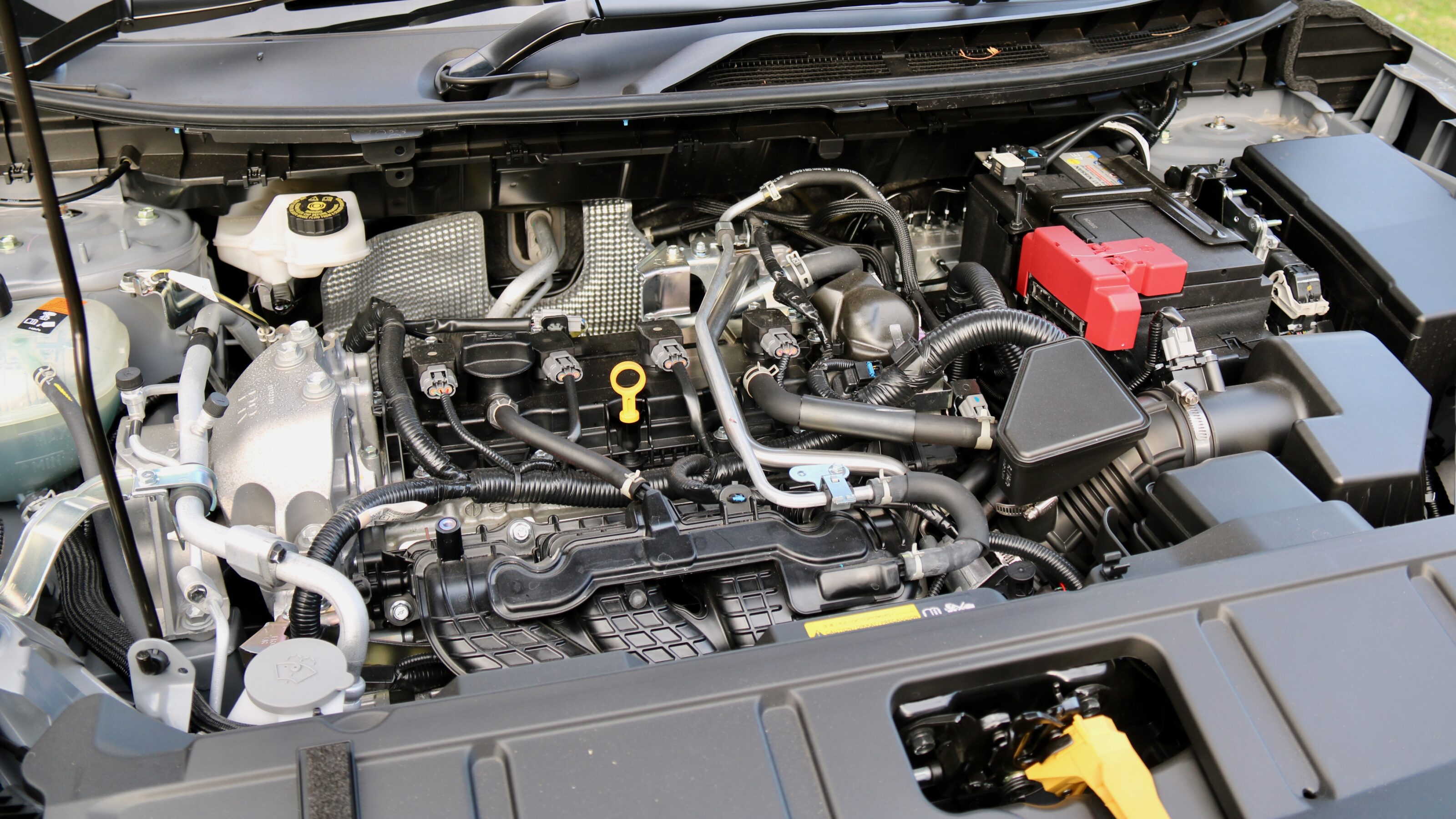
There are two drivetrain choices for the X-Trail: a naturally aspirated 135kW/244Nm 2.5-litre petrol engine, or a 157kW hybrid combining a turbocharged 1.5-litre three-cylinder engine with two electric motors. Both drivetrains use a CVT automatic transmission and while two- or all-wheel drive is available with the petrol engine, the hybrid is exclusively all-wheel drive.
The petrol engine is refined and perfectly adequate for most buyers, but the hybrid is more efficient, more powerful and – thanks to the unique set up of the e-Power system where only the electric motors drive the wheels and not the engine – smoother as well. That’s because unlike hybrid competitors, there’s no transition between the electric motor and petrol engine powering the wheels.
Is the Nissan X-Trail expensive to run?
The claimed fuel consumption for the X-Trail range ranges from 6.1L/100km for the e-Power hybrid to 7.8L/100km for all-wheel drive petrol variants with claimed CO2 emissions of between 139g/km to 183g/km. A 55-litre fuel tank is standard and the X-Trail can run on 91RON regular unleaded fuel, though Nissan recommends that the hybrid runs on minimum 95RON premium unleaded.
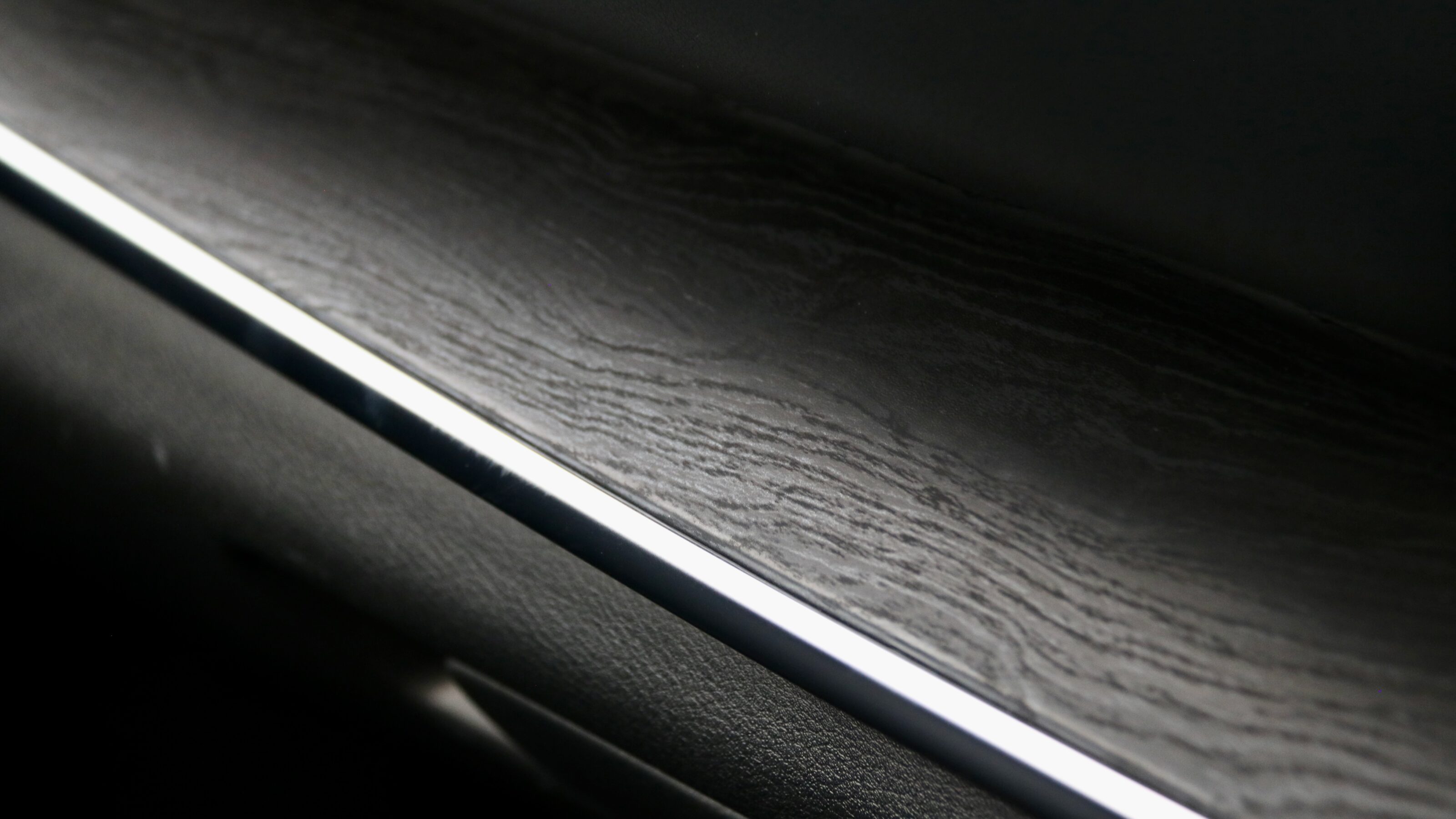
The X-Trail range is covered by a five-year/unlimited km warranty with five years of roadside assistance that can be extended up to 10-years/300,000km if serviced through a Nissan dealership. For hybrids, there is also an eight-year/160,000km warranty for the battery. All X-Trails use annual or 10,000km (whichever comes first) service intervals and the capped service cost for five years or 50,000km of servicing costs $1,995 ($399 per service).
How much can the Nissan X-Trail tow?
The braked towing capacity for petrol X-Trail models is 2,000kg, with hybrids rated at 1,650kg. Both drivetrains can tow a 650kg unbraked trailer.
Which Nissan X-Trail variant is best?
Our money would be going towards the $50,765 +ORC ST-L e-Power hybrid. The ST-L is well equipped with features like leather trim, an electric driver’s seat, heated front seats and a comprehensive suite of active safety features including a 360-degree camera.
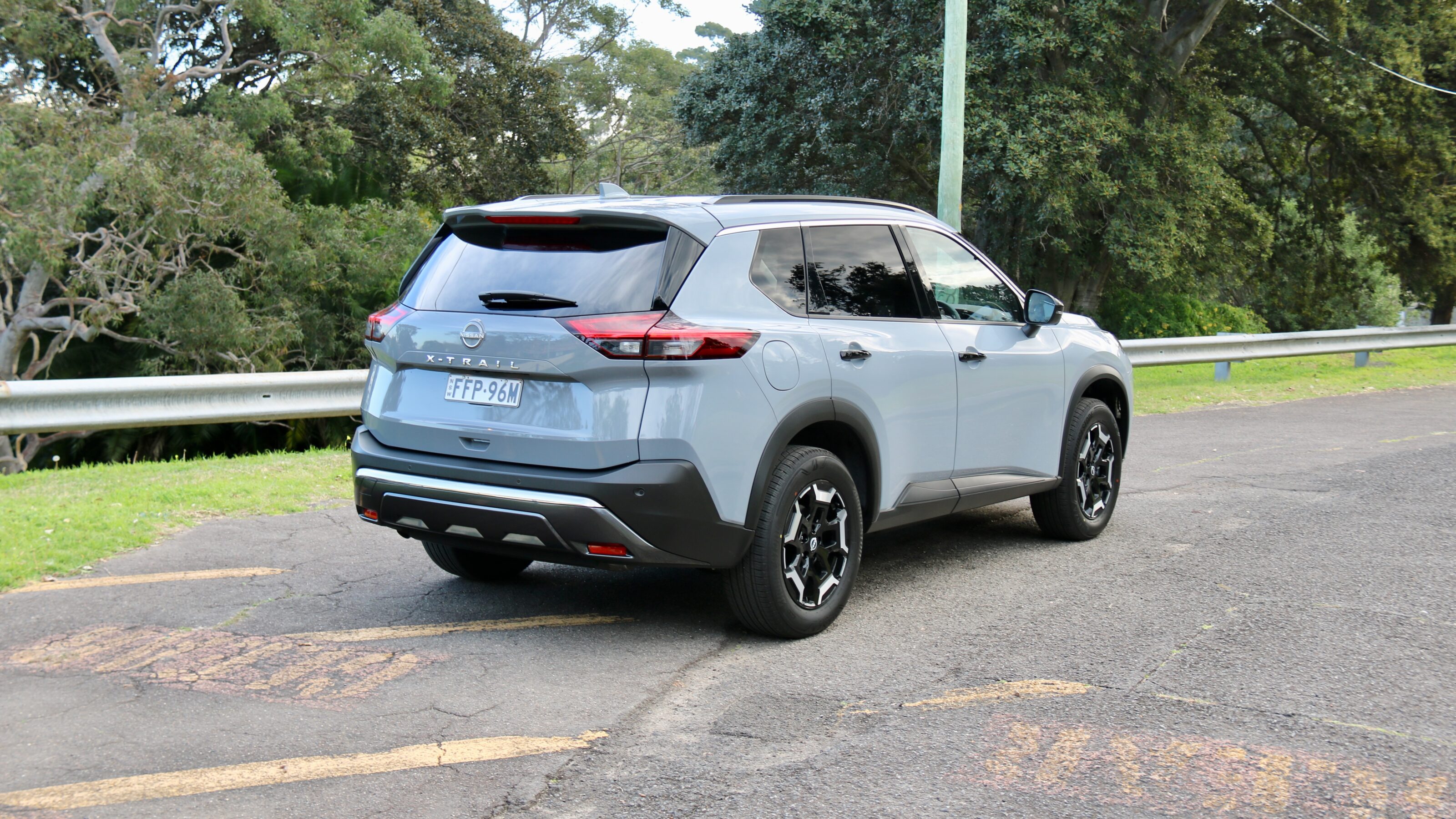
The e-Power hybrid drivetrain is also worth spending the extra money for, in our opinion. Although it’s only available with five seats in Australia, it’s considerably punchier and more efficient than the petrol engine. It also gives the X-Trail a USP in the segment thanks to its clever hybrid set up.
Which vehicles rival the Nissan X-Trail?
MG Motor Australia has taken the opportunity of a restored Australian motor show to announce it will launch its highly anticipated U9 ute in the Australian market later in 2025.
The dual-cab, 2.5-litre turbo-diesel U9 was revealed at the Melbourne Motor Show in a milestone for the rejuvenated marque, which understands any self-respecting car brand in the Australian market must offer a commercial ute – the second-highest selling category in Australia.
Powered by a 164kW four-cylinder engine and promising toughness and durability, the U9 is expected to offer serious value in the category, which is MG’s proposition with each new product. It could also move the brand into the top echelon of carmakers in Australia if successful.

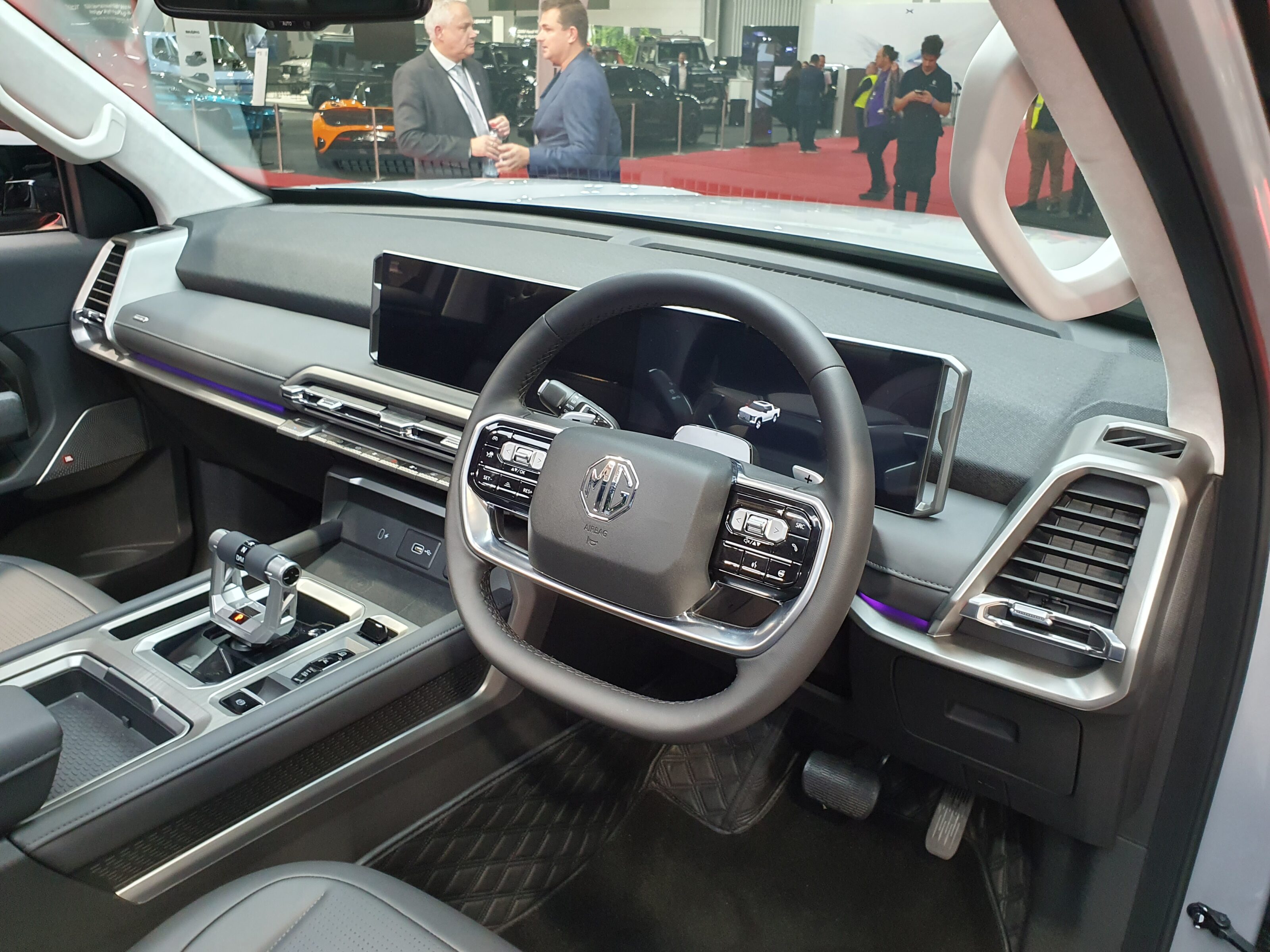
“The U9 isn’t just a new model – it’s a turning point for us,” said MG Motor Australia’s Chief Executive Officer, Peter Ciao “We’ve built our reputation on delivering unmatched value, and now we’re bringing that same promise to one of Australia’s most competitive segments. If we want to be a top-three brand in this country, we need a ute that punches above its weight – and the U9 does exactly that. It’s tough, capable, and built for the way Australians drive. We know the demand is there, and we’re ready for it.”
The U9 will also be sold under the LDV brand as the Terron 9.
It will be backed by MG’s impressive 10-year/250,000km warranty.
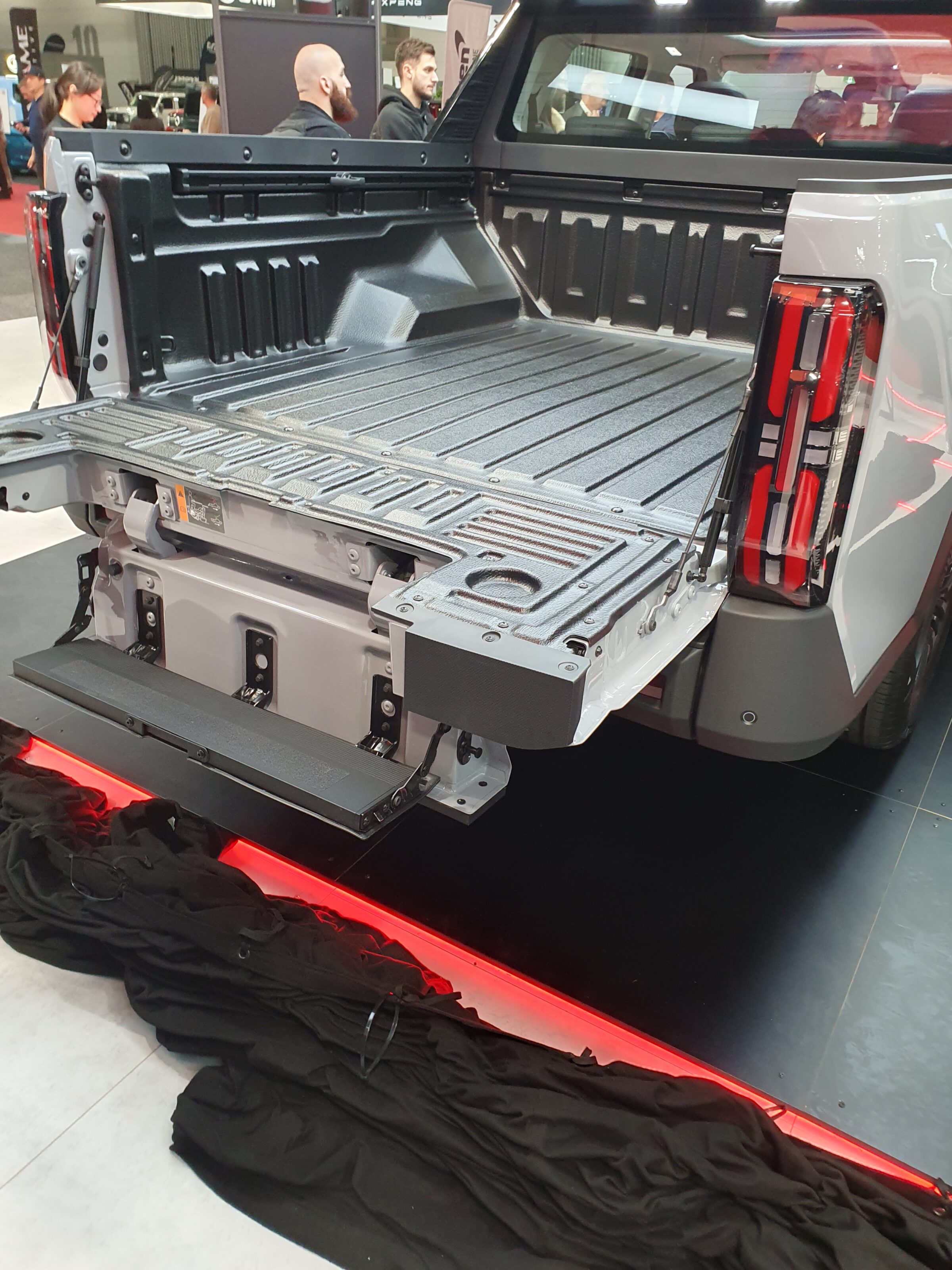
The ute is the headline act of a big Melbourne Motor Show for the brand, which will also unveil a number of other models, including:
- the MGS5 EV compact rear-wheel drive SUV, the next MG model to be introduced in Australia;
- the seven-seat QS, powered by a 2.0-litre turbocharged four-cylinder petrol engine and expected to be launched as MG’s first entrant in this segment in Australia later in 2025;
- a new MG HS HYBRID+ SUV will complete MG’s reveals at the Melbourne Motor Show, a new generation plug-in hybrid for the fuel-conscious family.
“We didn’t want to introduce a ute that was the same as everyone else’s,” MG’s Chief Commercial Officer Giles Belcher told WhichCar. ‘Visually the U9 is very striking, it ticks all the boxes you need to tick to be a player, with safety and 3.5-tonne towing, it’s got plenty of power and torque… then you add in its dimensions, it’s a car that will really stand out in the market.”
“It has great features for long drives, massage seat for the driver, heated ands ventilated seats, and a lot of flexibility in terms of cabin space,” said Kevin Kou, Product Planning Manager at MG Motor Australia. “The rear seat can fully fold down so you can put extra gear in there. The front passenger side can also fully fold down so it creates a lot of practicality to use.
“The ute will also go through extensive testing here for Australian conditions before launch – and that it’s 4X4 capabilities are well suited to the Australian conditions.”
JAC Motors has revealed its JAC Hunter plug-in hybrid Dual-Cab 4X4 Ute to the world at the Melbourne Motor Show.
Not expected in Australia until 2026, the JAC Hunter is described by the brand as its “most powerful and technologically advanced production vehicle”, with series production commencing later this year.
The plug-in hybrid petrol-electric utility combines an efficient all-new 2.0-litre turbocharged petrol engine with front and rear electric motors to deliver an impressive 385kW of power and 1000Nm of torque.
That makes it a serious contender in the growing electrified ute segment, outpowering many rivals.
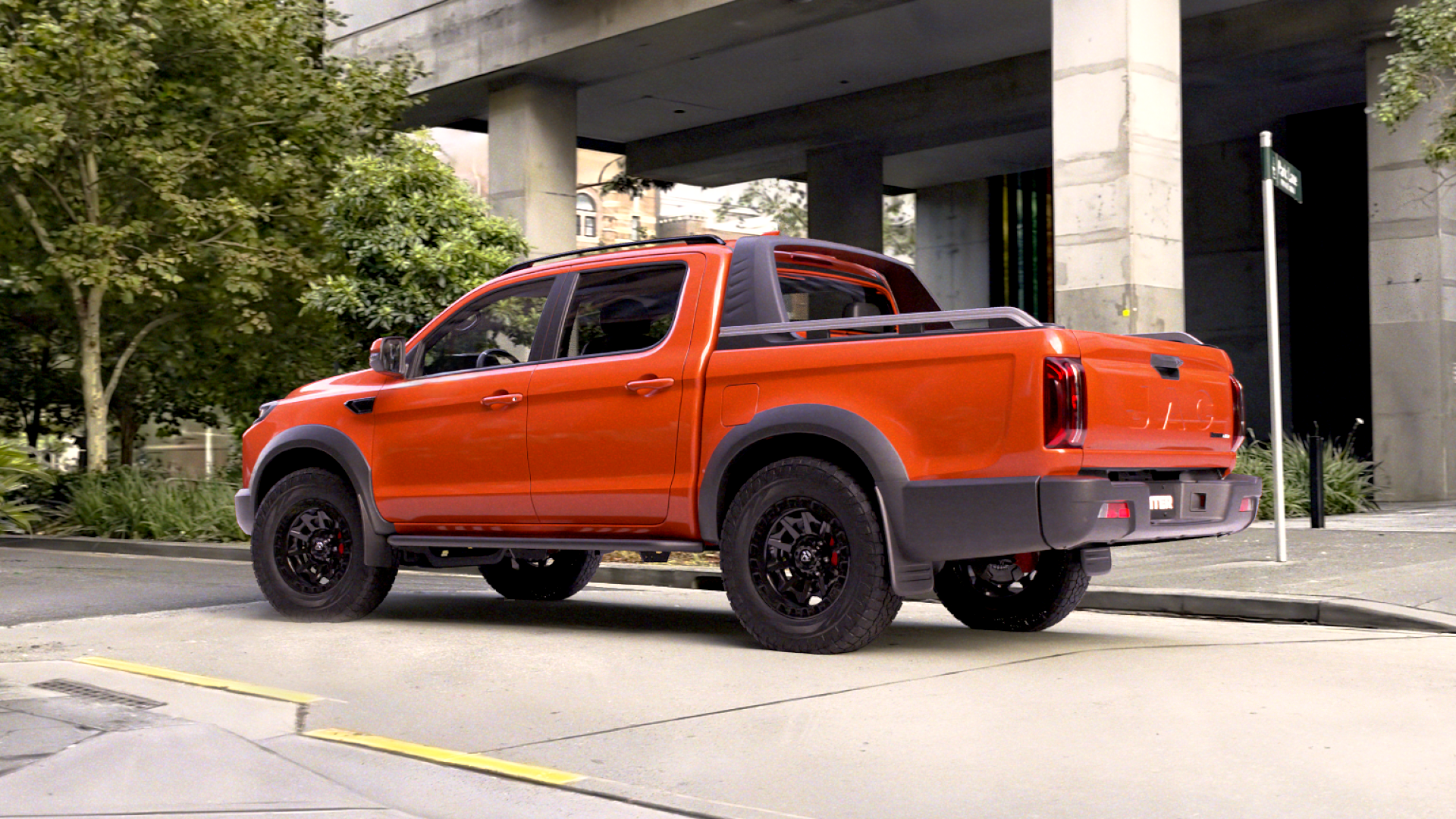
The four-door ute will aim for an electric-only driving range of at least 100km from its lithium-iron phosphate battery pack. It will also boast a Vehicle-to-Load (V2L) system that allows owners to power tools, appliances, and even provide emergency backup power from the vehicle’s battery.
Inside, owners of the JAC T9 turbodiesel sibling will recognise some features including a10.4-inch portrait touchscreen infotainment system with Apple CarPlay and Android Auto integration, alongside a fully digital 10.25-inch instrument cluster.
Driver assistance will include enhanced autonomous emergency braking, adaptive cruise control with stop-and-go functionality, and a 360-degree camera system.
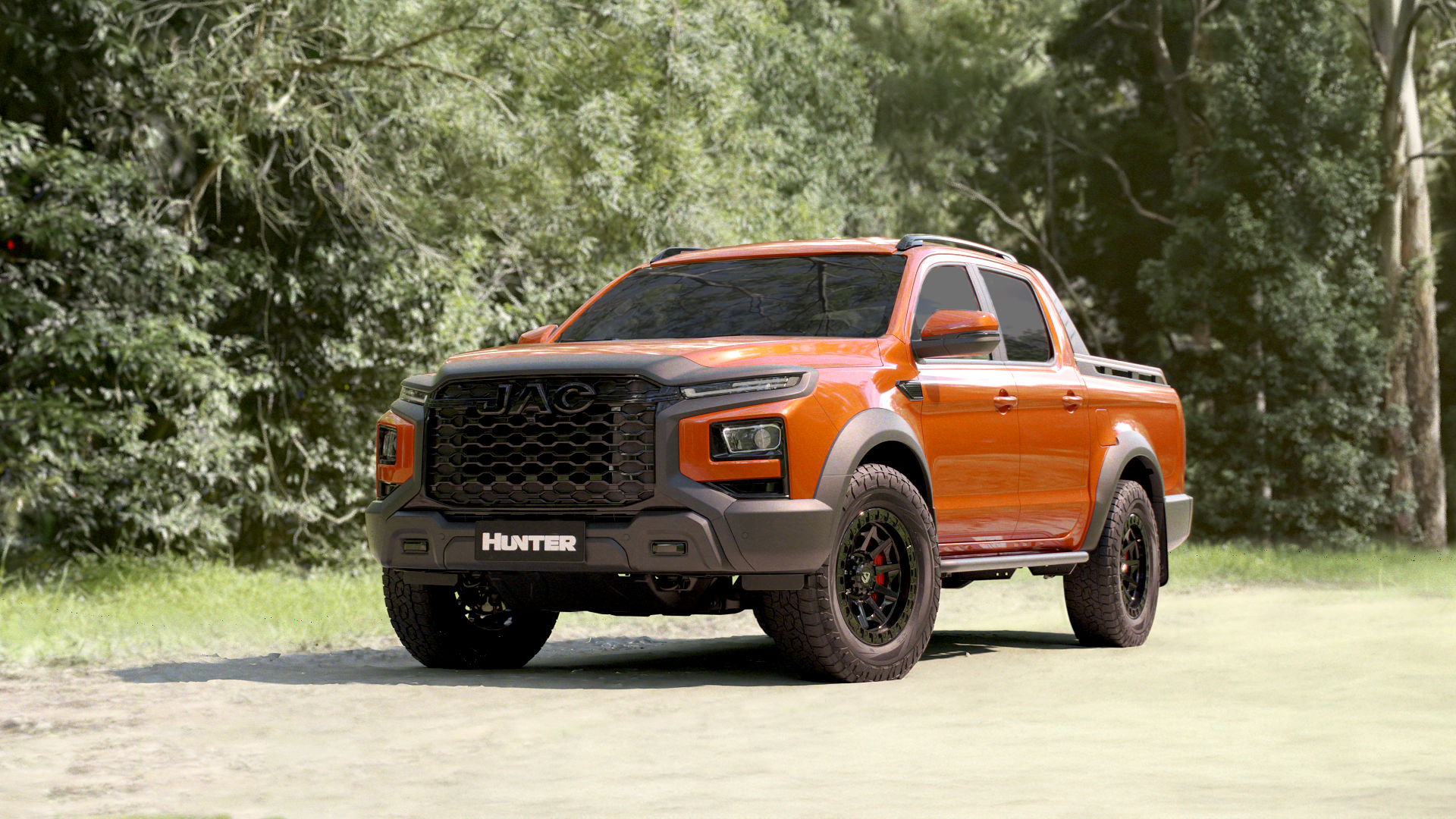

The brand conducted extensive Australian testing of the T9 on which the Hunter is based to ensure the T9’s suspension, ADAS, powertrain and cooling systems were all validated for Australia’s harsh climate and demanding conditions.
The JAC Hunter will arrive in Australian showrooms in the first quarter of 2026. Australian pricing and specifications will be announced closer to that time.
Subaru has announced that the sixth-generation Forester is due to debut at the Melbourne Motor Show ahead of a mid-year launch, with trim levels and equipment also detailed.
To be offered in seven individual models with both petrol and hybrid drivetrains, the new Forester compact SUV will be available with either a 2.5-litre petrol engine or a new ‘strong’ hybrid drivetrain that combines a 2.5-litre petrol engine with an 88kW electric motor and a 1.1kWh battery.
Subaru says the Forester hybrid is capable of travelling over 1000km on a tank of fuel, though outputs and fuel economy figures are yet to be revealed. The hybrid makes 145kW in the US.
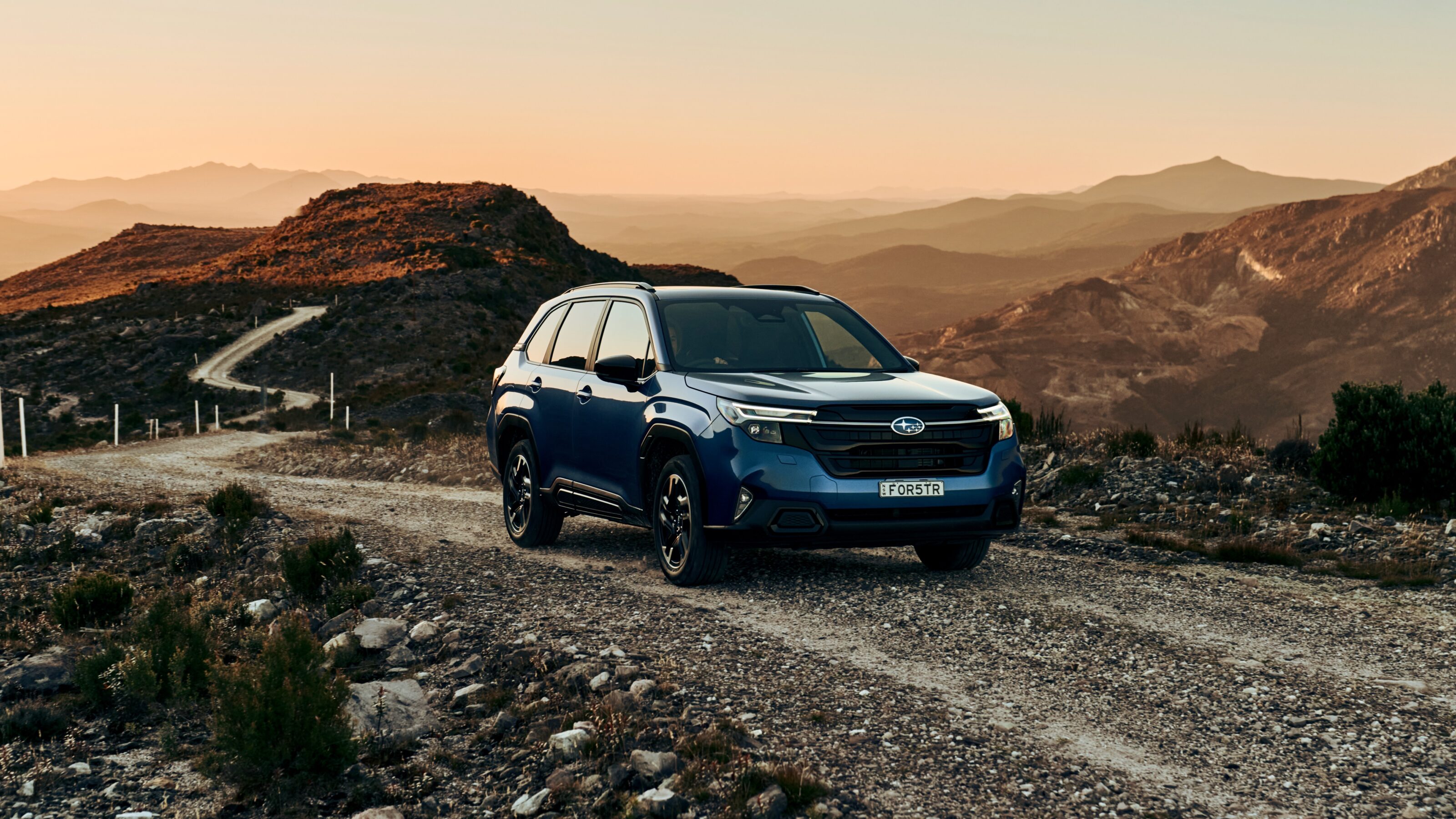
While Subaru is yet to detail pricing, it has revealed that the Forester line-up is better equipped this time around with a widened range of ability for the active safety tech thanks to a three-camera set up, including a new emergency driving stop function that automatically stops the car slowly if the driver becomes unresponsive.
A new 11.6-inch touchscreen is standard across the range, as is wireless phone charging, and a 12.3-inch digital driver’s display is standard in the Sport hybrid and Touring hybrid models.
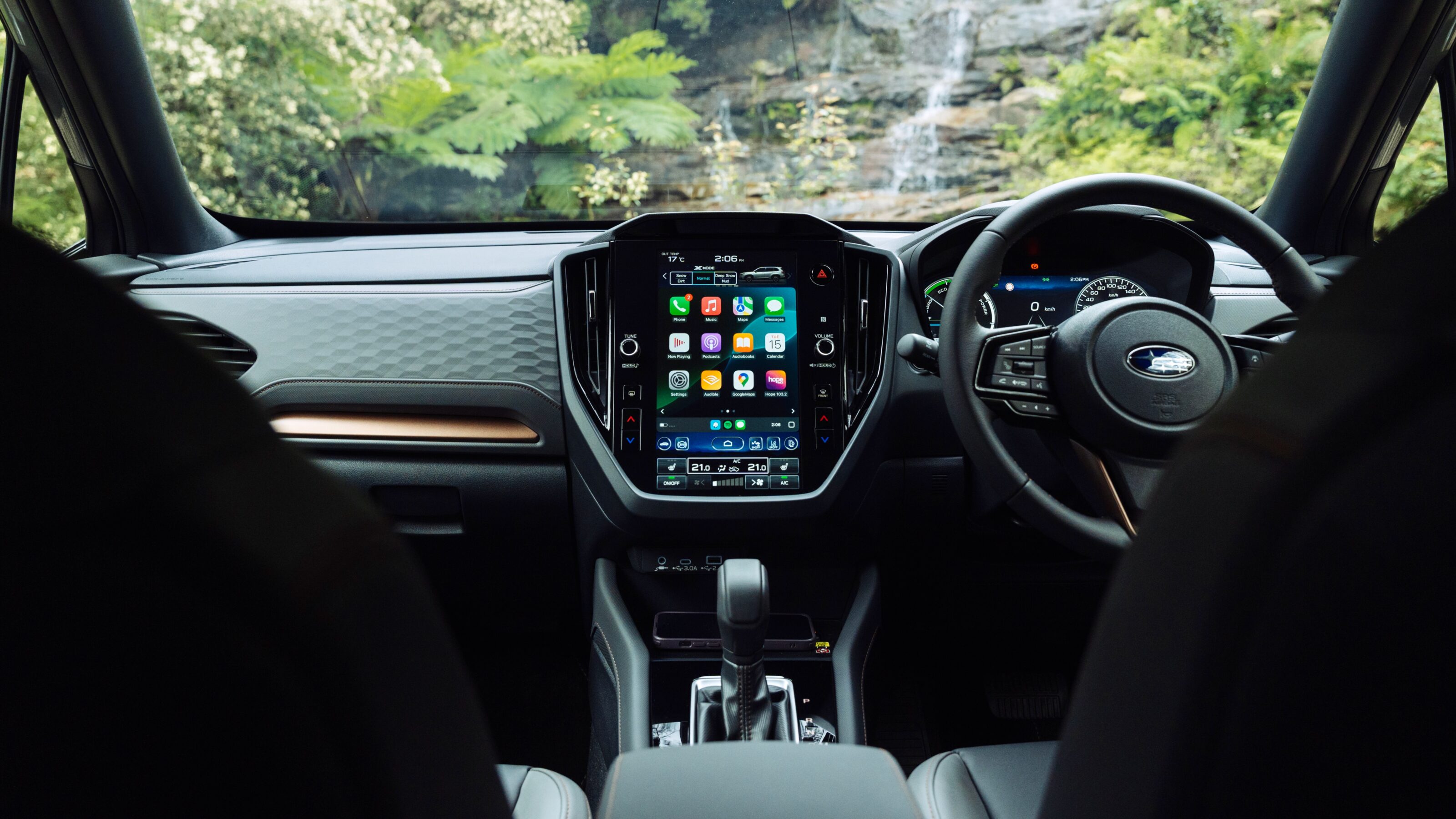
Subaru Forester AWD standard equipment:
- 18-inch alloy wheels
- X-Mode all-wheel drive traction system
- SI-Drive driving modes
- Ladder-style roof rails
- Heated front seats
- Dual-zone automatic climate control
- 11.6-inch touchscreen
- Wireless Apple CarPlay and Android Auto
- Wireless phone charger
- Nine airbags
- Wider-angle monocular camera with emergency driving stop system
- Front side radar
- Reverse automatic braking
- 360-degree camera (hybrid only)
Forester Premium adds:
- Satellite navigation
- Electric tailgate with kick sensor
- 8-way electric front seats with driver’s memory and lumbar adjustment
- Auto-folding mirrors with auto-dipping passenger mirror
- Driver monitoring system including automatic seat and mirror adjustment
Forester Sport adds:
- Water repellent synthetic leather upholstery
- Sunroof
- Dark metallic wheels
- Black grille and green exterior and interior detailing
- 12.3-inch digital instrument cluster (hybrid only)
- Enhanced suspension (hybrid only)
- 10-speaker Harman Kardon sound system (hybrid only)
- Bronze 19-inch alloy wheels (hybrid only)
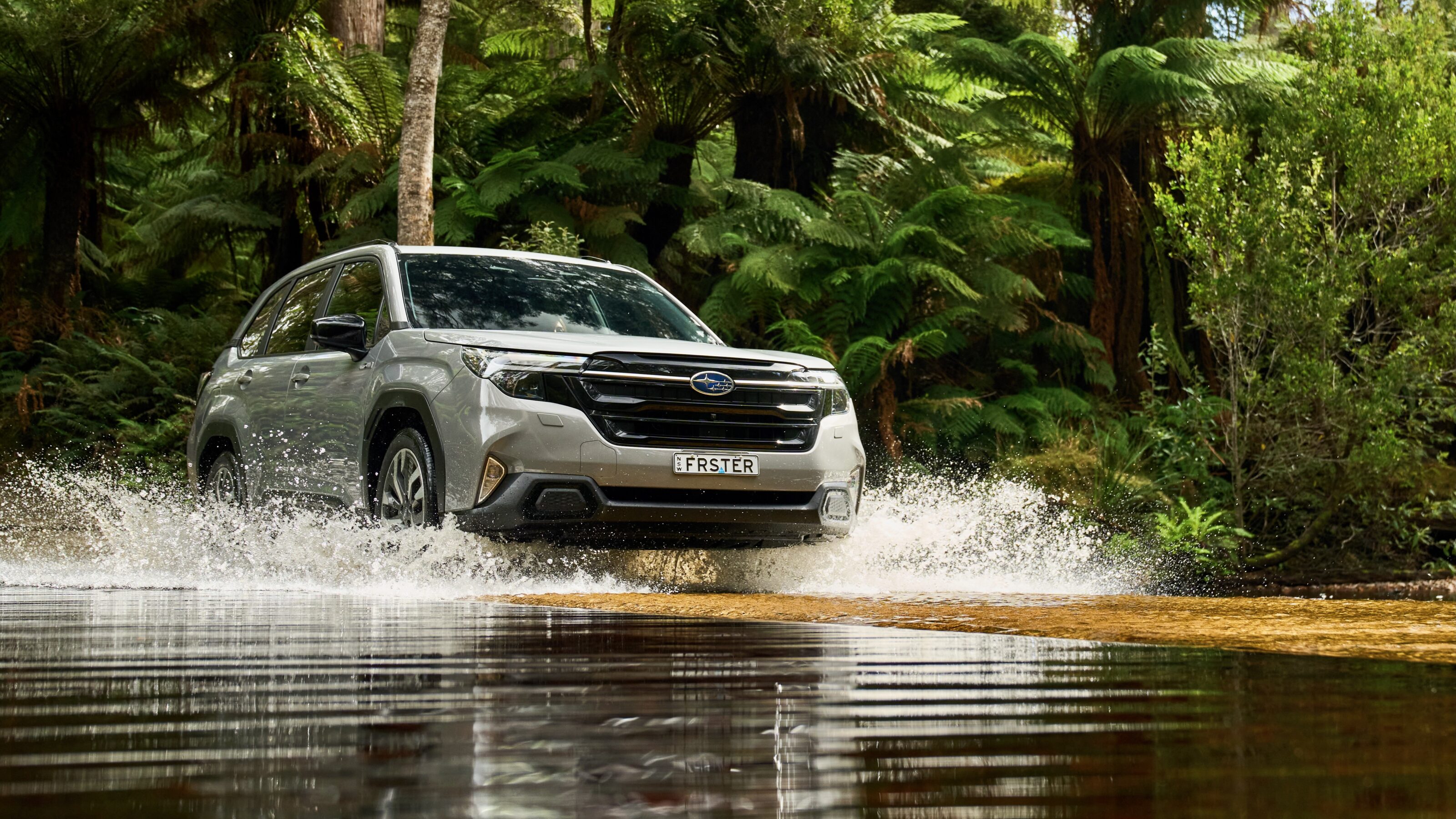
Forester Touring adds:
- 10-speaker Harman Kardon sound system
- Leather and suede upholstery (black or tan)
- Front seat ventilation
- Gloss black exterior highlights
- Low profile roof rails
- Dark machined 19-inch alloy wheels (hybrid only)
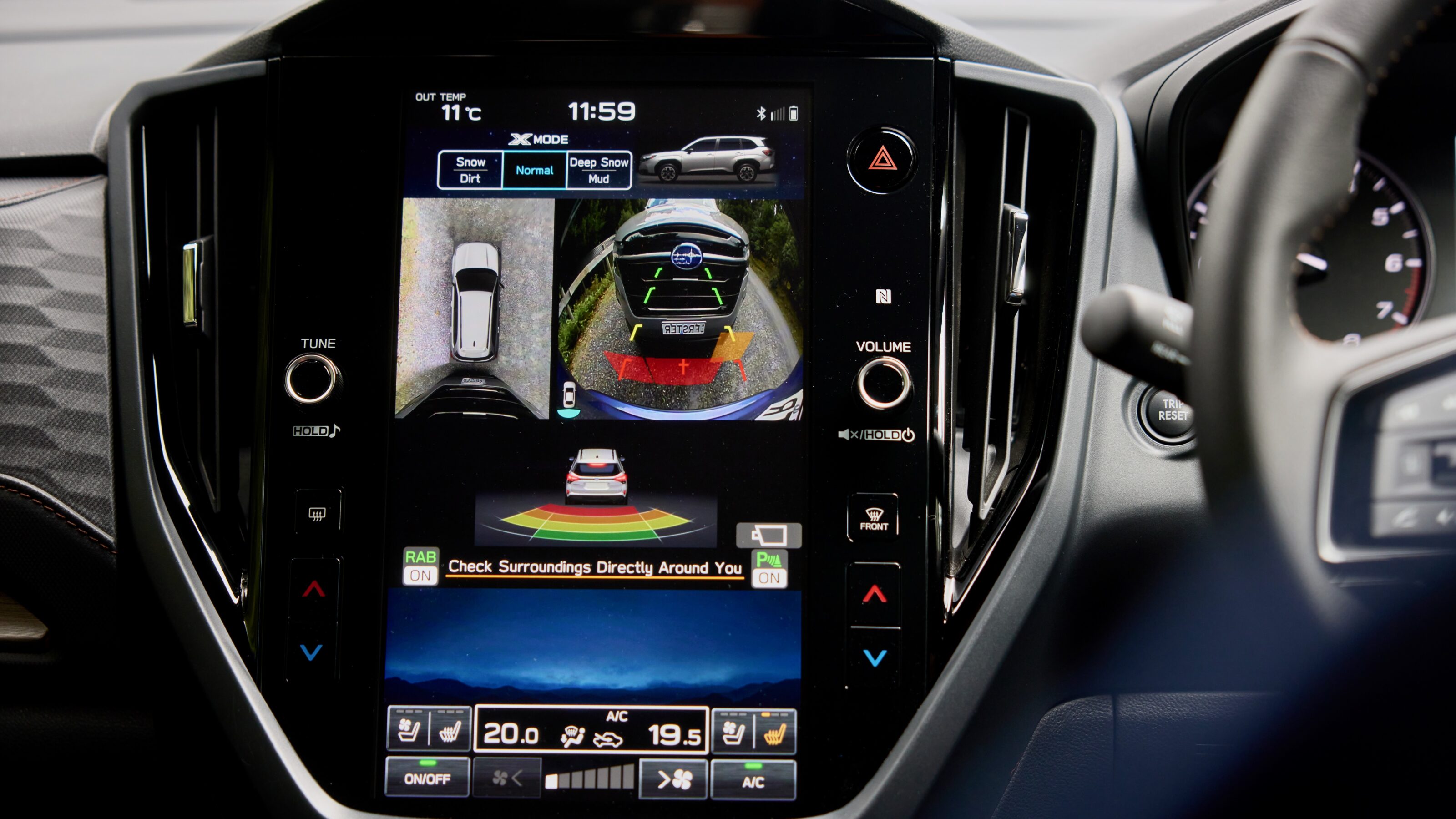
The new Subaru Forester will go on sale in Australia at the half way point of the year, with local pricing yet to be confirmed.
Like all groundbreaking concepts, understanding exactly what the Ford Ranger Super Duty is takes a moment or so. It’s tempting to think of it as a Ranger that can tow 4500kg, but to merely position it in such a way does the engineering behind this vehicle an injustice. And besides, Ford already had a vehicle in its line-up, the F-150, that performs that function quite adequately.
What no other vehicle in the Aussie market does right now is combine three particular attributes: the ability to tow 4.5 tonnes, rugged off-road ability and all of that while retaining a useful payload. Plenty of utes offer two of those qualities but nothing delivers on all three. Ford knew this because numerous fleet operators in forestry, in mining, in rail and in firefighting told them so.
To date, in order to fulfil those requirements, fleet operators had to go to the aftermarket, utilising multiple third-parties in order to custom build a vehicle that fitted their demands. This increased the cost of the vehicles and the complexity of fleet management, so it made all sorts of sense for Ford to offer them a single point of contact.
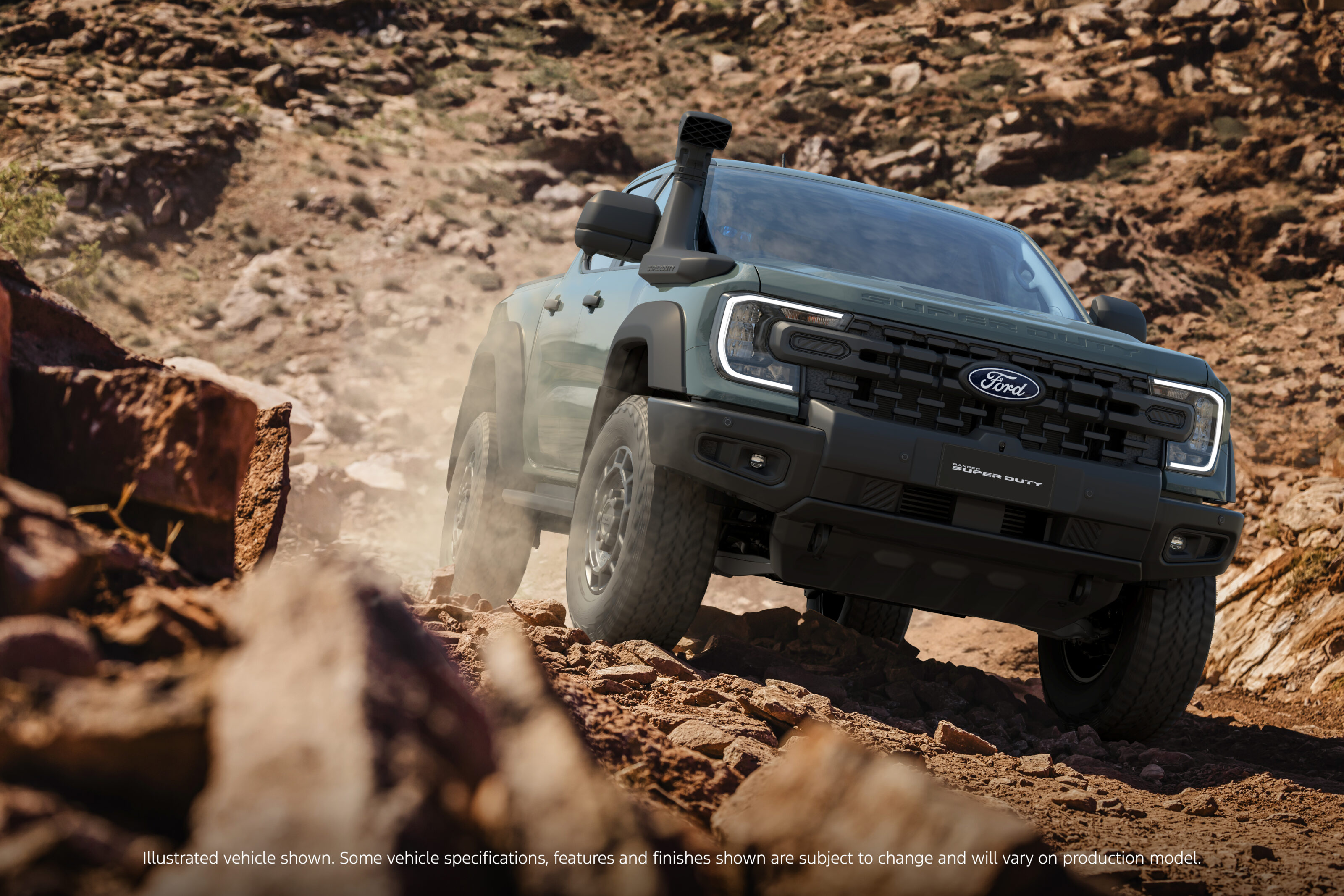
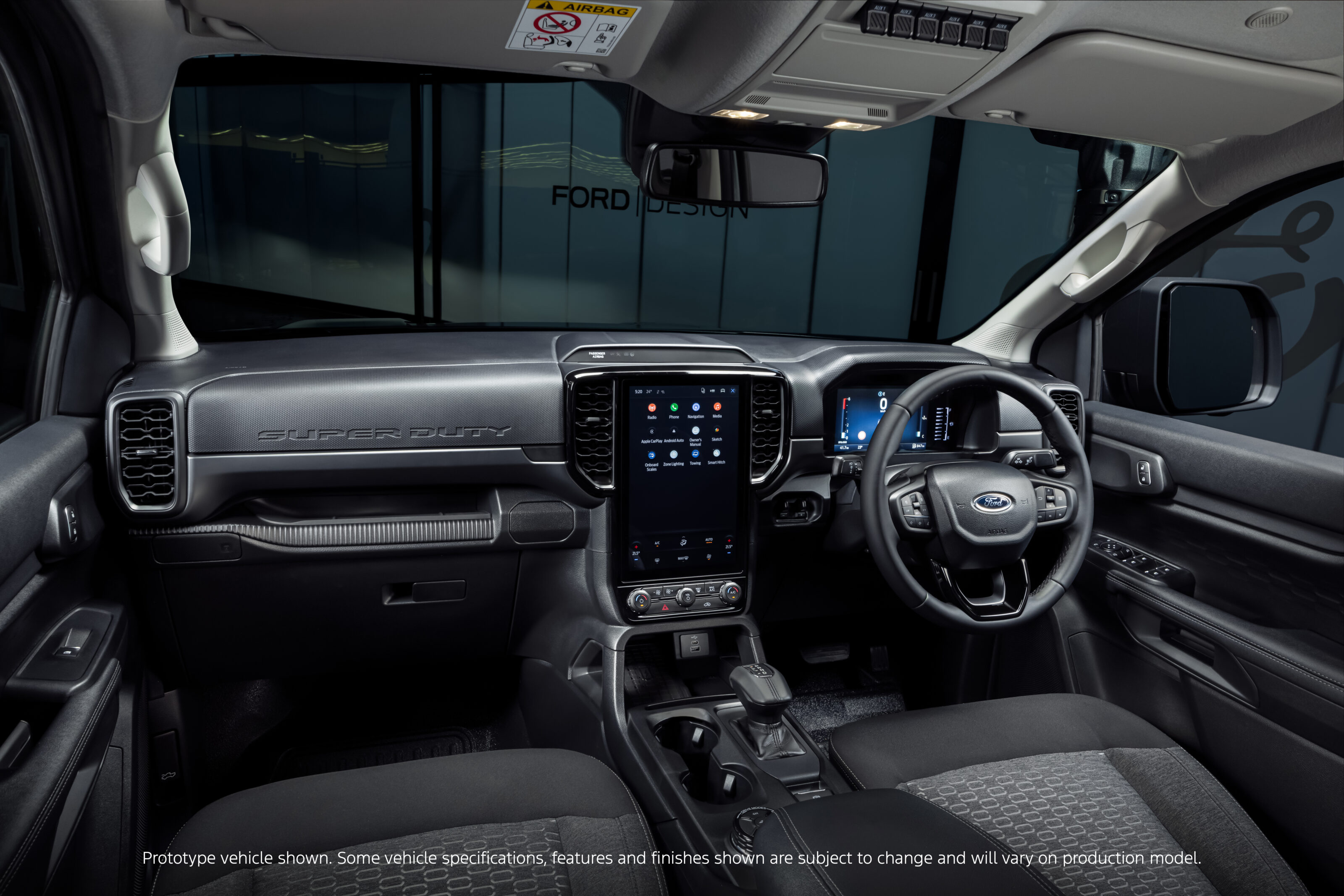
As the concept for the Ranger Super Duty was fleshed out, Ford also realised that a vehicle of this ilk would likely appeal to private buyers, especially those who were into overlanding or adventure touring, at the same time avoiding stepping on the toes of the existing Ranger Raptor or the facelifted F-150.
We got the chance to look at a pre-production prototype at Ford’s Broadmeadows facility but, given that the Super Duty’s not set to be released until next year, full specifications, especially around power, torque and pricing, were not available.
The first thing that strikes you is that it has some serious presence, and looks like no existing Ranger. The squared-off wheelarches smack more of a Hilux special edition than the rounded treatment we’ve become used to on the P703 Ranger, and the Raptor’s track width and added ride height give it a no-nonsense stance. The standard-fit snorkel is part of a whole suite of changes to bring wading depth up to 850mm (50mm above the normal Ranger), while the eight-stud 18-inch wheels – shod with 33-inch all-terrain tyres – are increased in size to house the bigger brake discs and calipers.
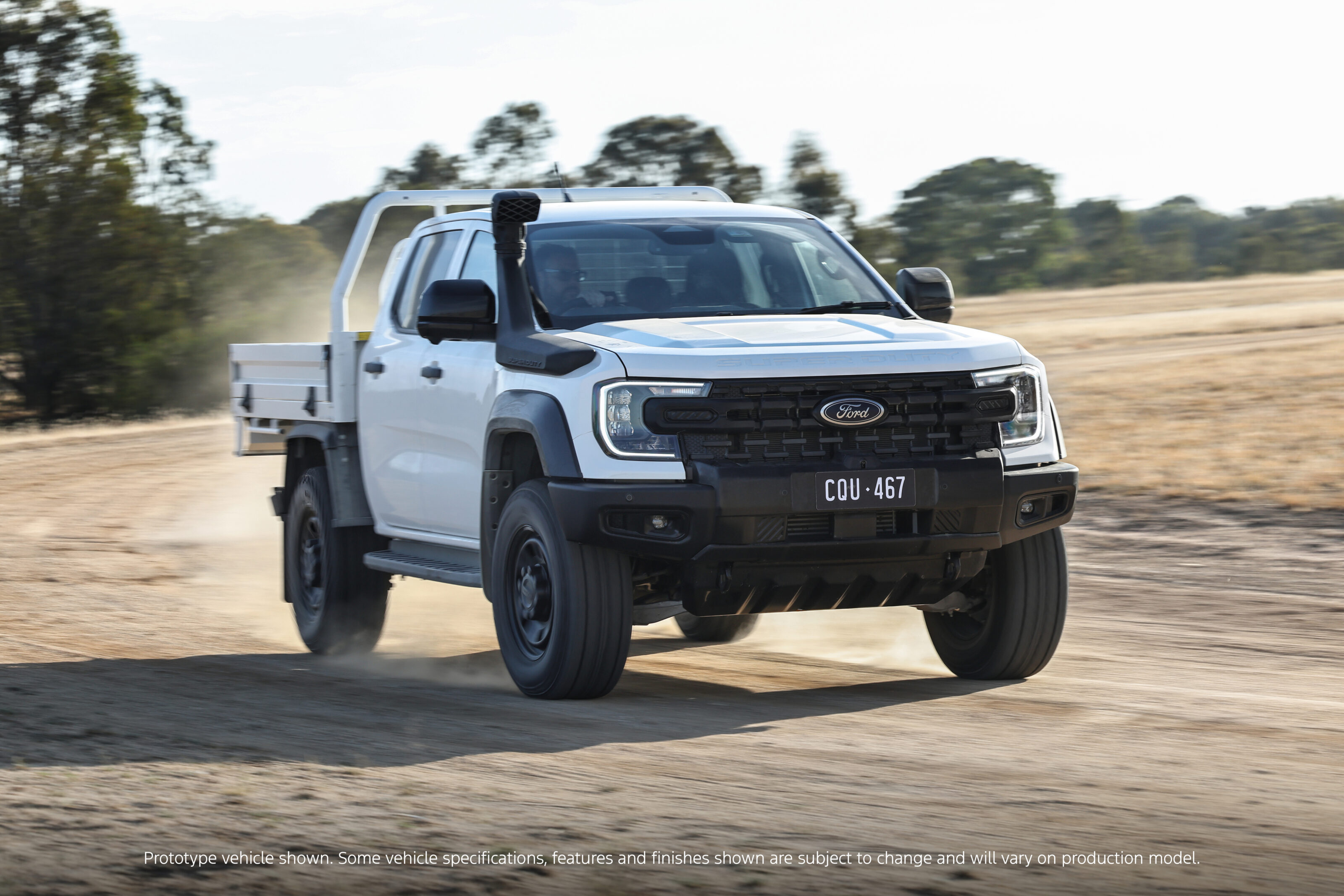
The grille has been redesigned to allow better through-flow of air, there’s a meaty steel front bumper, dual-rated, frame-mounted front and rear recovery hooks, bigger door mirrors, a unique steel tray, composite heavy duty side steps and screw-fitted mud flaps. The bonnet has been redesigned for the Super Duty – the first non-F truck to wear that particular badge – and features more contoured shaping and a raised leading edge with the Super Duty badging embossed into it.
It’s under the skin that the serious work has been done though. Ford targeted a Gross Vehicle Mass (GVM) of 4500kg, a braked towing capacity of 4500kg and a Gross Combination Mass (GCM) of 8000kg. What this means in practice is that the Ranger Super Duty can tow its full 4.5-tonne quota and still retain a tonne of available payload. A real world application of the massive GCM rating is that the Country Fire Authority’s Land Cruiser firefighting water tanker is rated to carry 400 litres, whereas a Ranger Super Duty build is capable of hauling a tonne of water to hard-to-reach off-road fire hotspots.
As well as heavier duty suspension, the Ranger Super Duty has better ground clearance and improved approach and departure angles compared with normal Ranger models. There’s a long range 130-litre fuel tank and extensive steel underbody protection that runs from the engine to the rear differential. Front and rear diff locks, an upgraded ‘jumbo’ diff, new transfer case, axles and driveshafts, redesigned engine mounts, reinforced wheelarch liners and a 25 per cent more effective cooling fan are all standard-fit items.
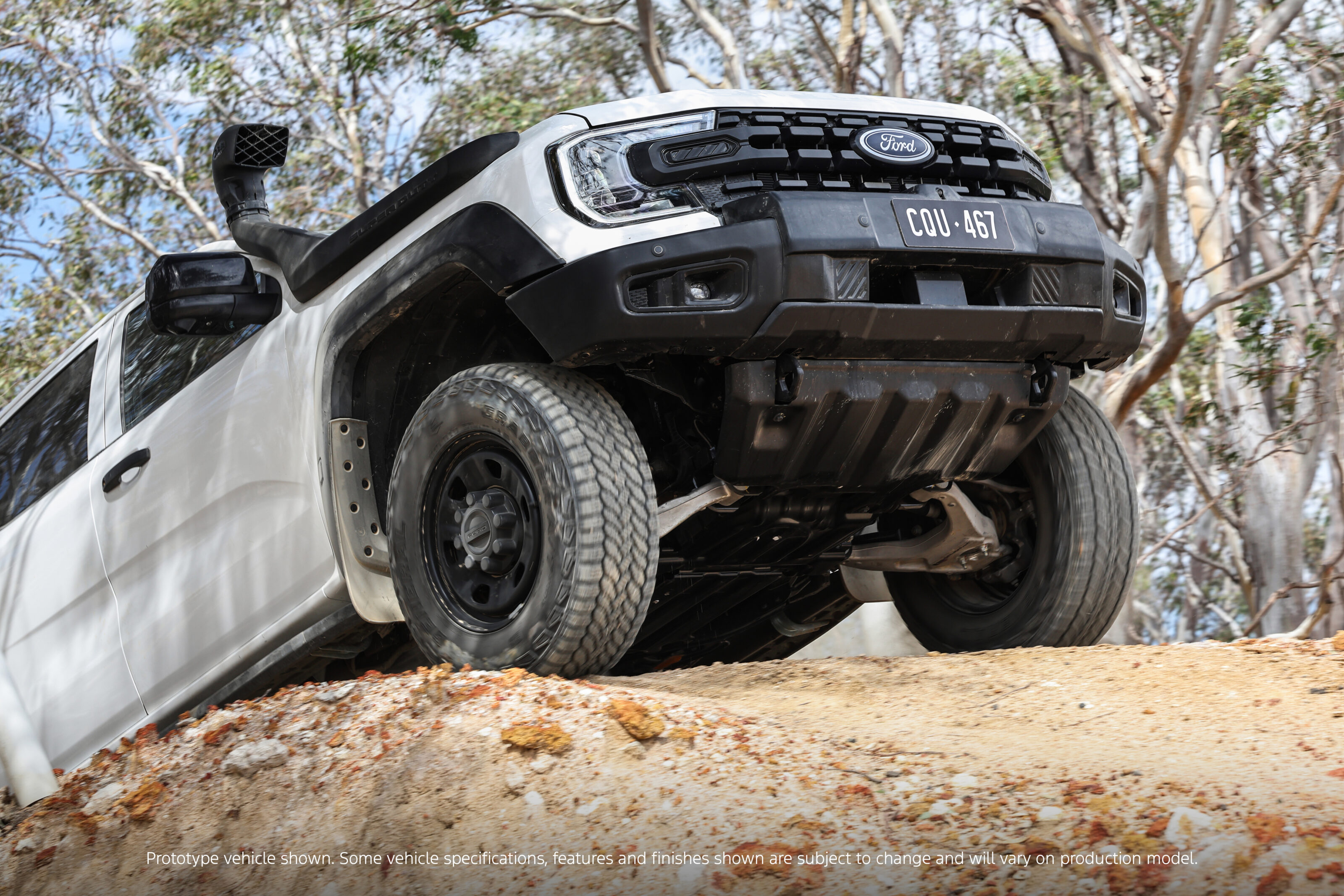
The Super Duty also features four-wheel on-board scales so that users can monitor how close they’re coming to Gross Vehicle Weight Rating, and a smart hitch also displays downball load, allowing those who tow to redistribute loads for increased safety.
Ford’s being somewhat coy about power and torque, but the existing 3.0-litre V6 turbodiesel and 10-speed automatic transmission carry over, albeit with new calibrations that prioritise torque response. The prodigious wheelslip torque of the Super Duty required the upgrading of the rear differential.
Ford has endeavoured to transfer as much of the Ranger’s safety tech to the Super Duty and the rear end features a Driver Assist Technology bar, enabling rear park assist, blind spot detection with and without trailers and a 360-degree camera. The cabin features vinyl flooring (a luxury pack will be offered to retail customers) and a bank of auxiliary switches.

The company has worked hand-in-hand with Australian suppliers, with an ARB front bar to be offered and a 12,000kg rated winch. Conversion warranty periods will be aligned to Ford’s warranty duration. Existing Ranger canopies will fit on an identical rear box line, and the Thai-built Super Duty is set to be offered in single cab chassis, super cab chassis, double cab chassis and double-cab pick-up bodies. Buyers will get a choice of three colours: Arctic White, Seismic Tan and Traction Green.
Pricing? We suspect this one’s not going to be cheap, given the amount of work that has gone into it and the niche nature of the market, but then most expected the Ranger Raptor to be a niche product before it burst into the mainstream. The Ranger Super Duty could well follow suit. We’ll learn more when we get behind the wheel of it later in the year.
Mercedes-Benz has added a new entry point to the E-Class large sedan range, with the E 200 now on sale in Australia and sitting below the E 300 and AMG E 53 variants already on sale.
Priced from $117,900 plus on-road costs, the E 200 is priced $14,100 less than the previous entry point E 300, which is now the mid-range variant in the E-Class range.
Despite being the entry point to the E-Class range, standard equipment in the E 200 is healthy with features such as the Avantgarde exterior with 20-inch AMG wheels, digital light headlights with adaptive high beam, open pore black ash wood trim and the brand’s ‘Artico’ synthetic leather trim in black.
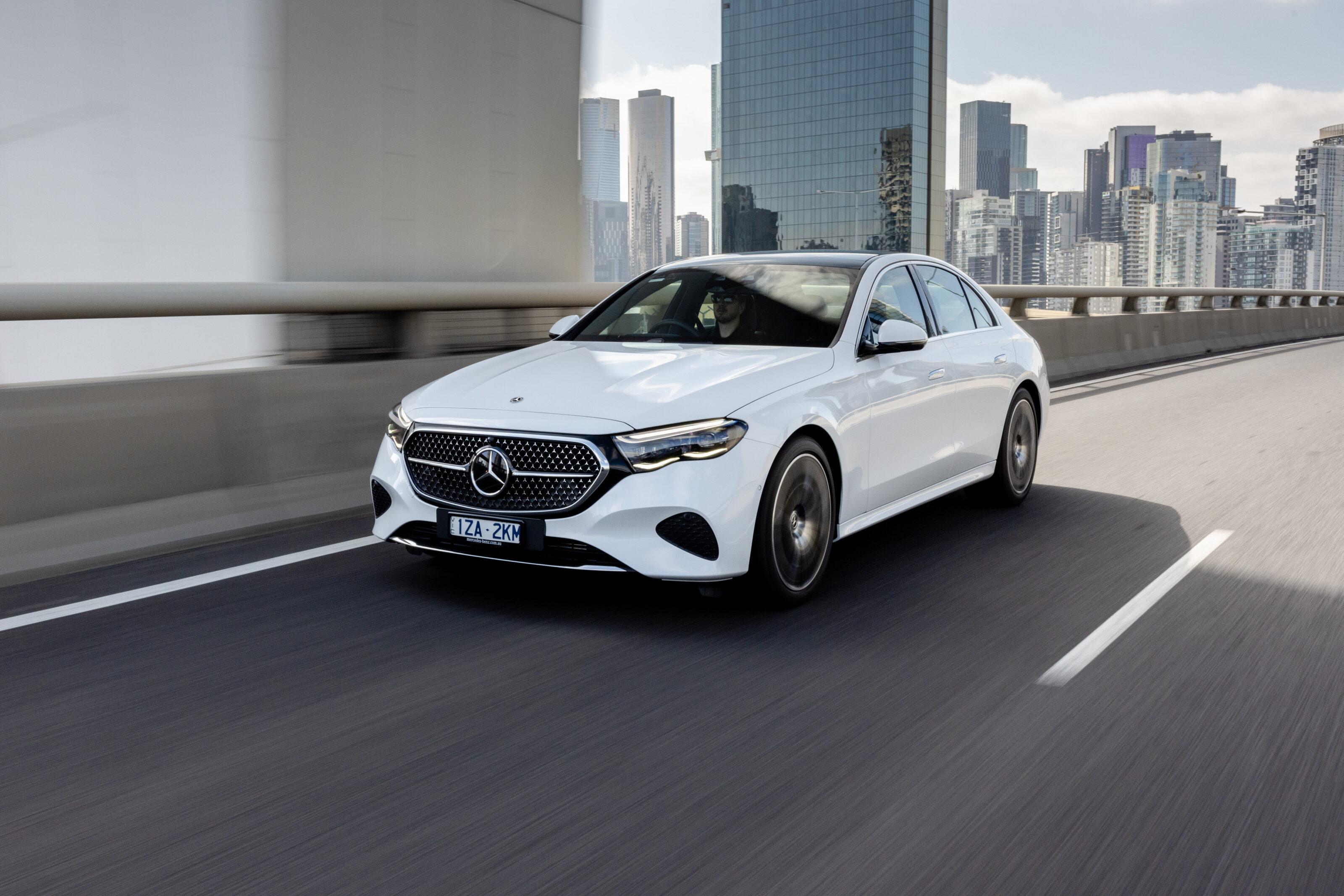
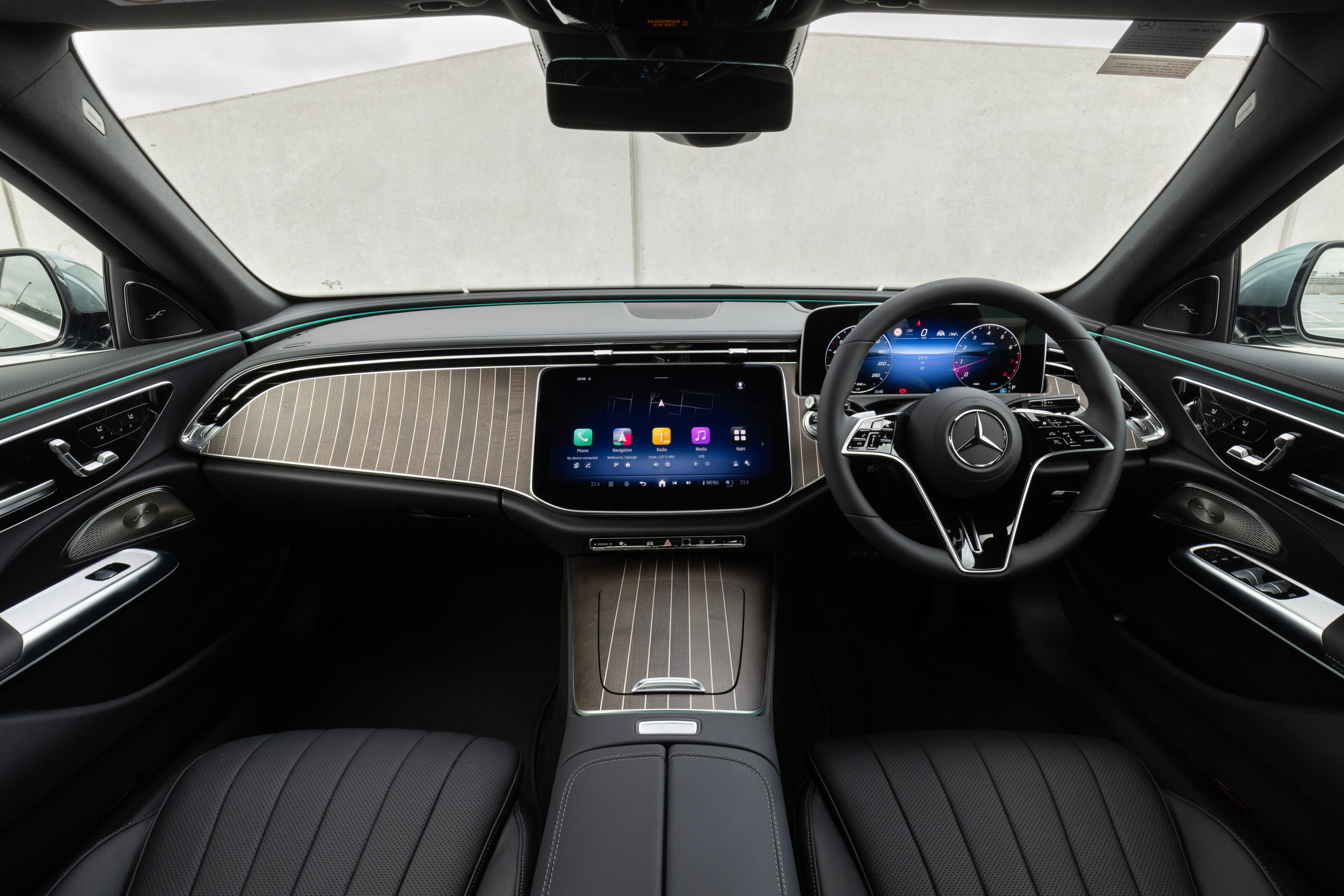
Inside, the cabin further features electric front seats with lumbar adjustment, a nappa leather steering wheel and dual-zone automatic climate control.
A 14.4-inch touchscreen with the brand’s ‘MBUX’ infotainment system is supplemented by a 12.30-inch digital driver’s display. The touchscreen features an inbuilt eSIM for live services, as well as Apple CarPlay and Android Auto and augmented reality satellite navigation. A 730 watt 17-speaker Burmeister sound system is also standard equipment.
The E 200 is also well equipped for safety features including 10 airbags, adaptive cruise control and blind-spot monitoring.
Buyers wanting more personalisation for the E 200 can choose the no-cost extra Exclusive Line with the upright Mercedes star on the bonnet, classic Mercedes radiator grille with three horizontal double louvres and grey 19-inch multi-spoke light-alloy wheels painted in grey. On the inside, brown open-pore maple wood trim element with aluminium lines features.
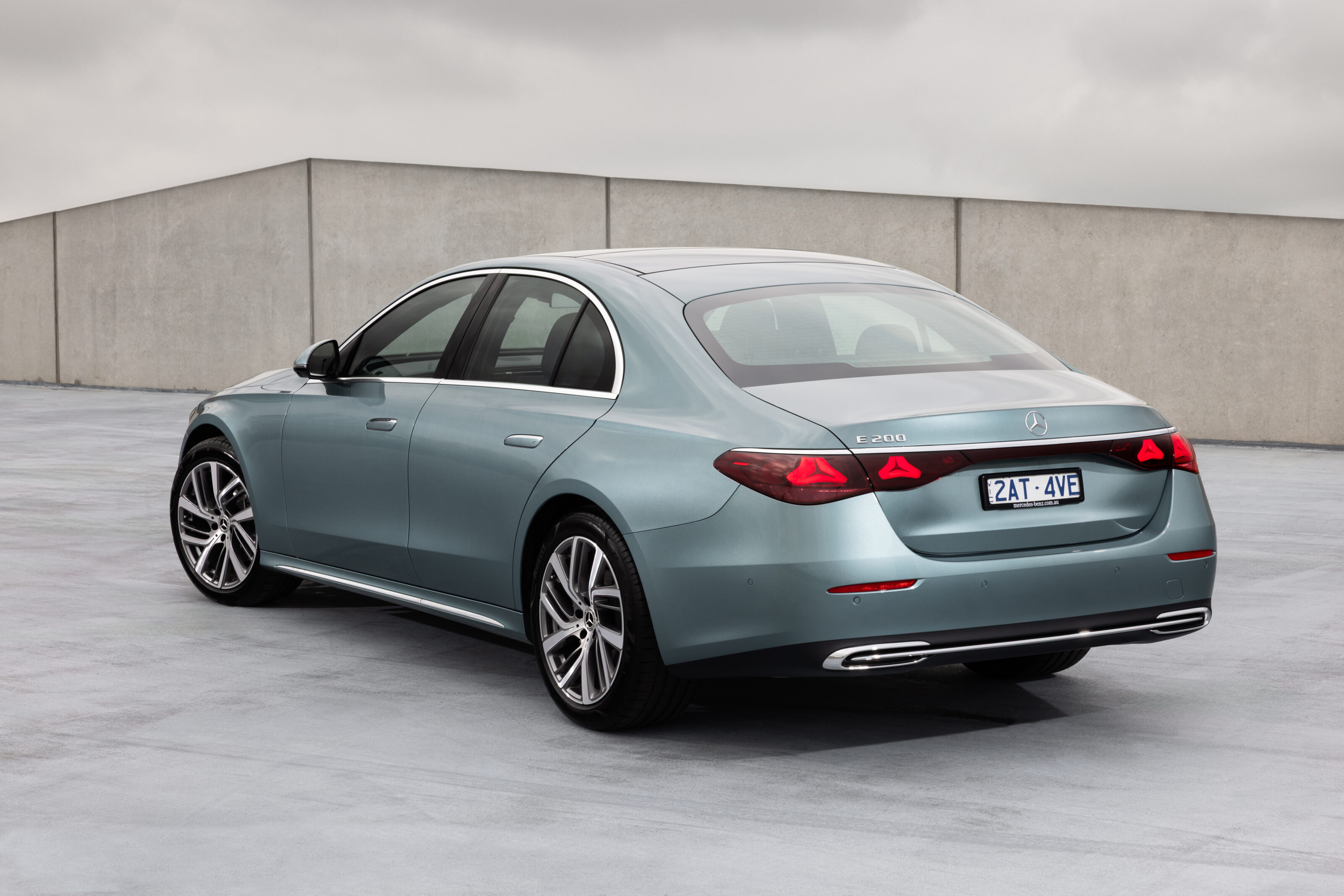
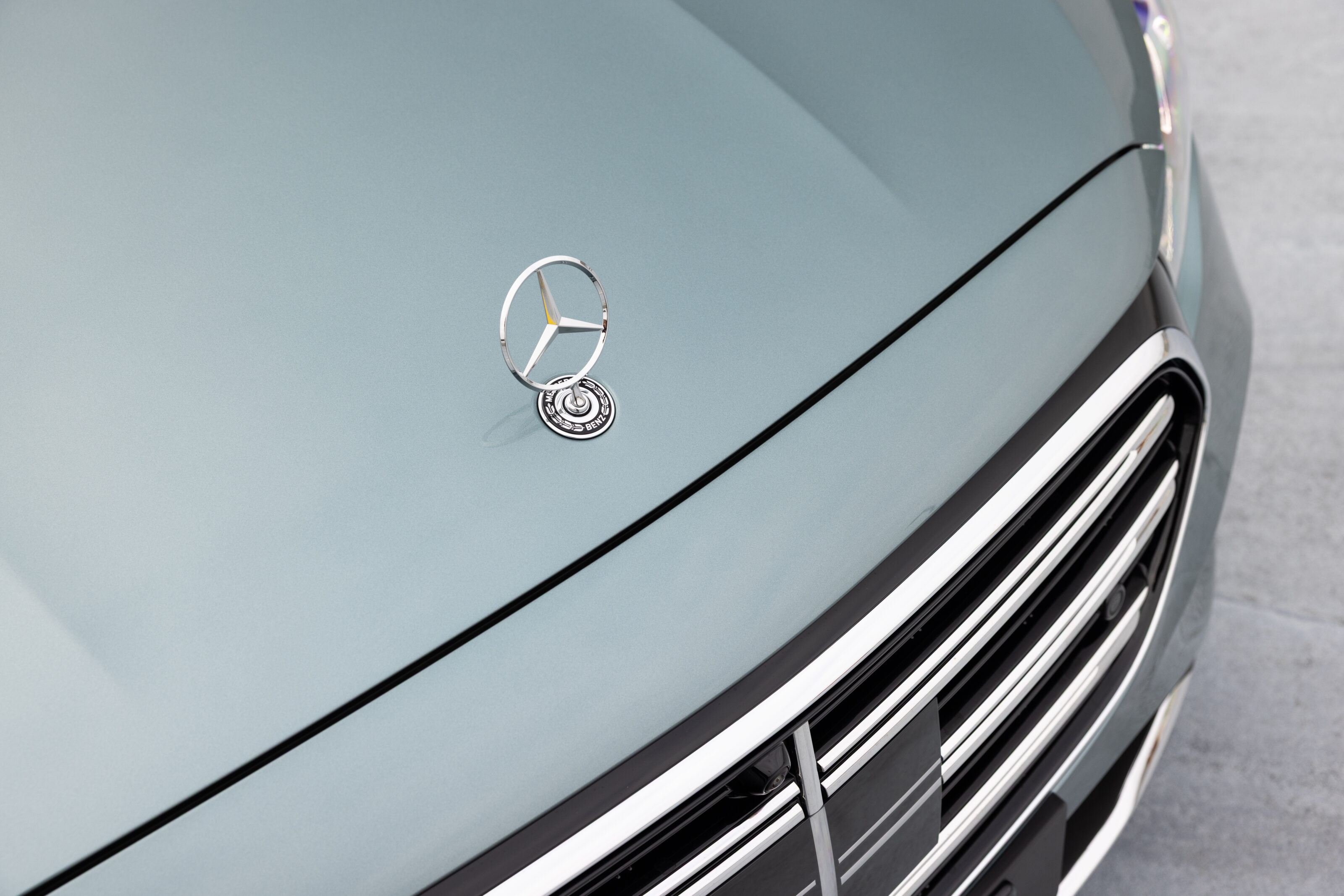
There is also an available Comfort Package with leather upholstery in three colour options – black, beige and brown – and ventilation and heating for the front seats.
Under the bonnet of the E 200 is a 2.0-litre turbocharged four-cylinder petrol engine mated to a 48V mild-hybrid system that can contribute an extra 17kW/205Nm when needed for total outputs of 150kW of power and 320Nm of torque – 40kW/80Nm less than the E 300.
As with the more powerful E 300, the E 200’s power is sent to the rear wheels via a nine-speed automatic transmission and the NEDC claimed fuel consumption is 7.2L/100km.
The E 200 is on sale now, with local deliveries to commence soon.
Things we like
- Excellent safety equipment list across the range
- Modern and feature-packed cabin
- New infotainment system an improvement
Not so much
- Powertrain’s starting to feel a bit dated
- Huge range can get confusing
- Manual available only on base SX
How comfortable and practical is the Isuzu D-Max?
The current shape D-Max impressed with its modern cabin when it launched locally in 2020, and even five years on against some newer competition, it’s still a good place to spend some time. The materials used are reasonable quality and hard wearing, while the new touchscreen software is easier to use and the digital driver’s display on upper-spec models also makes the cabin feel more modern.
Centre of the cabin is a new 7.0-inch or 9.0-inch (depending on model) touchscreen with a new layout that’s far easier to use than before. The screen is brighter too, and while it can be a bit slow to respond to touch, it’s well appointed with wireless smartphone mirroring and satellite navigation on higher-spec models. The eight-speaker sound system on the LS-U and above is surprisingly punchy and even has speakers in the roof.
The D-Max’s cabin features a good amount of storage space, including reasonable door bins, big cup holders in the centre console, a dual-level glovebox and pull-out cup holders on the dashboard on upper-spec models, a box underneath the central armrest and a tray ahead of the gearbox. Seat comfort is reasonable though the seats are a bit flat. The rear seat of the D-Max is comfortable and spacious for the segment, and brings handy features like air vents, a USB port, seat pockets, door pockets and a central armrest with cupholders. The seat can fold up or down to increase practicality, with storage available underneath the seat base.
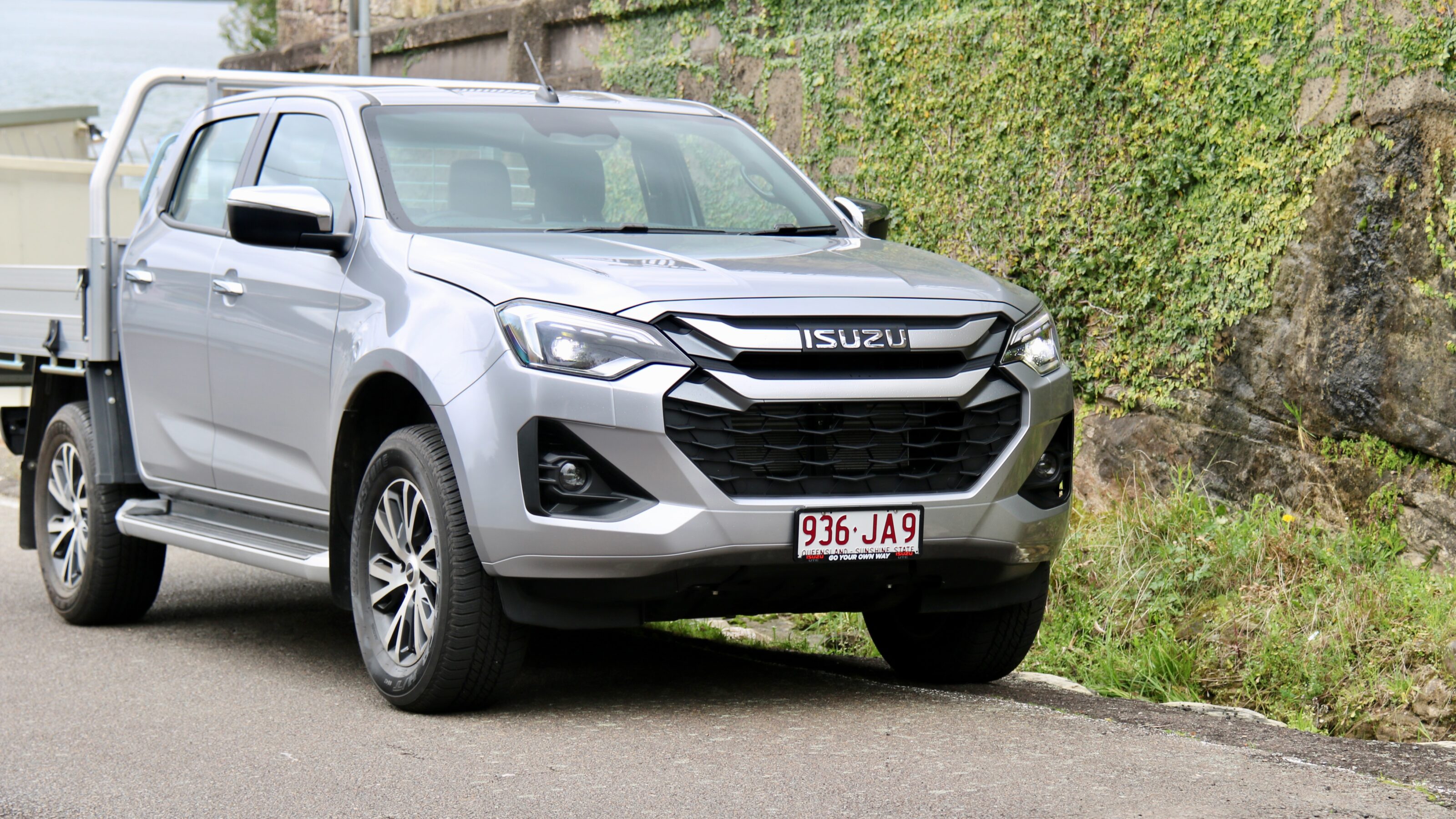
How big is the Isuzu D-Max?
Depending on bodystyle, the D-Max measures between 5,280mm and 5,430mm long, between 1,870mm and 1,880mm wide, between 1,785mm and 1,800mm tall, and rides on a 3,125mm long wheelbase.
The D-Max’s tray measures between 1,570mm long (utility) and 2,100mm long (single cab chassis), and between 1,530mm (utility) and 1,777mm (cab chassis) wide.
How much can the Isuzu D-Max tow?
The D-Max range can tow a 3,500kg braked trailer with the larger 3.0-litre engine – matching the best in the segment – whereas the smaller 1.9-litre engine can tow either 3,000kg (auto) or 2,800kg (manual). All models can tow a maximum 750kg unbraked trailer and the maximum tow ball download is 350kg for 3.0-litre models, 300kg for the 1.9-litre auto and 280kg for the 1.9-litre manual.
The GVM (Gross Vehicle Mass) for 1.9-litre variants is 3,000kg, with the larger engine adding 100kg to that. The Gross Combination Mass (GCM) ranges from 5,300kg for the entry-level SX 1.9-litre manual 4×2 to 6,000kg for the 3.0-litre 4×4 models.
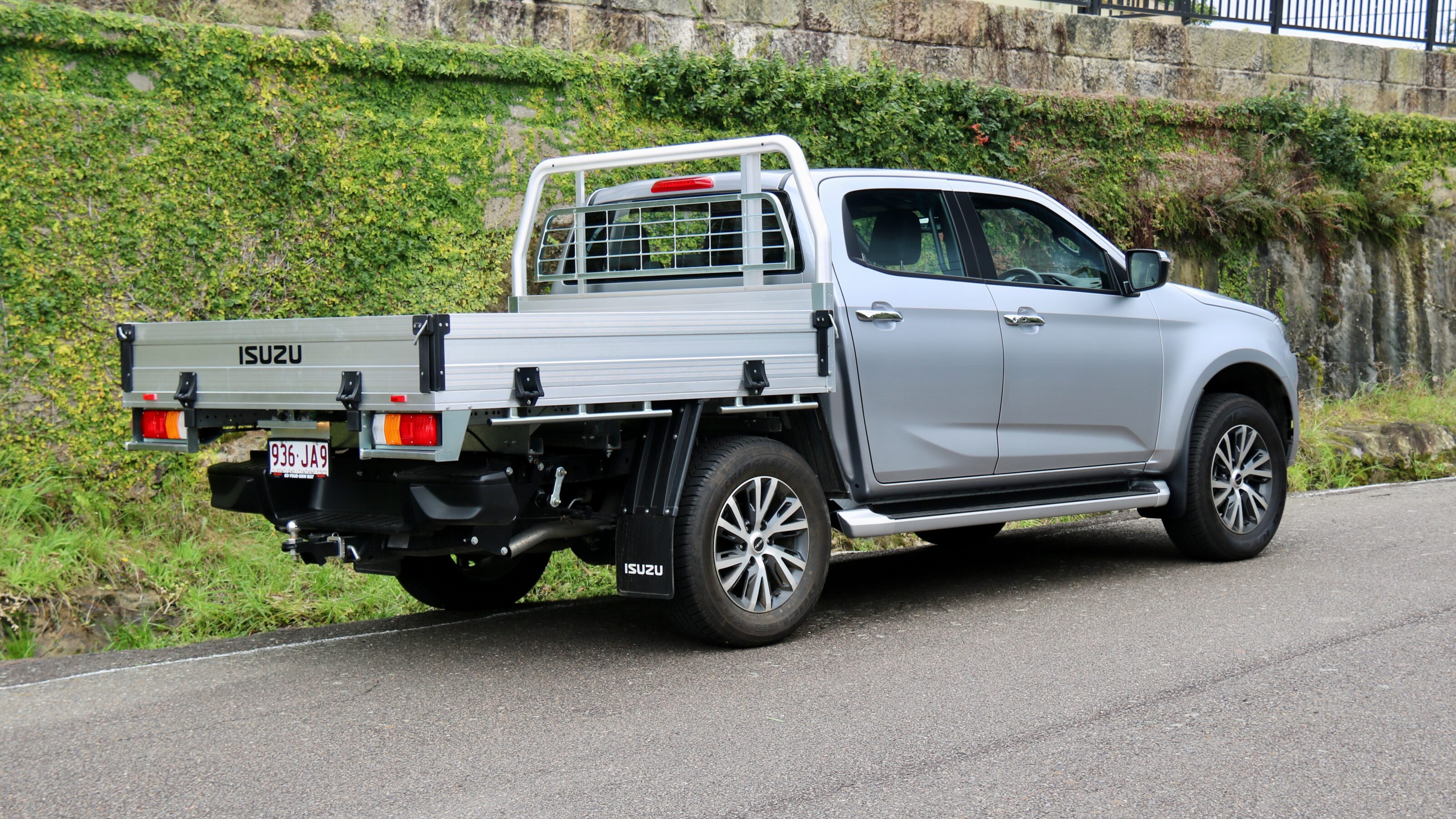
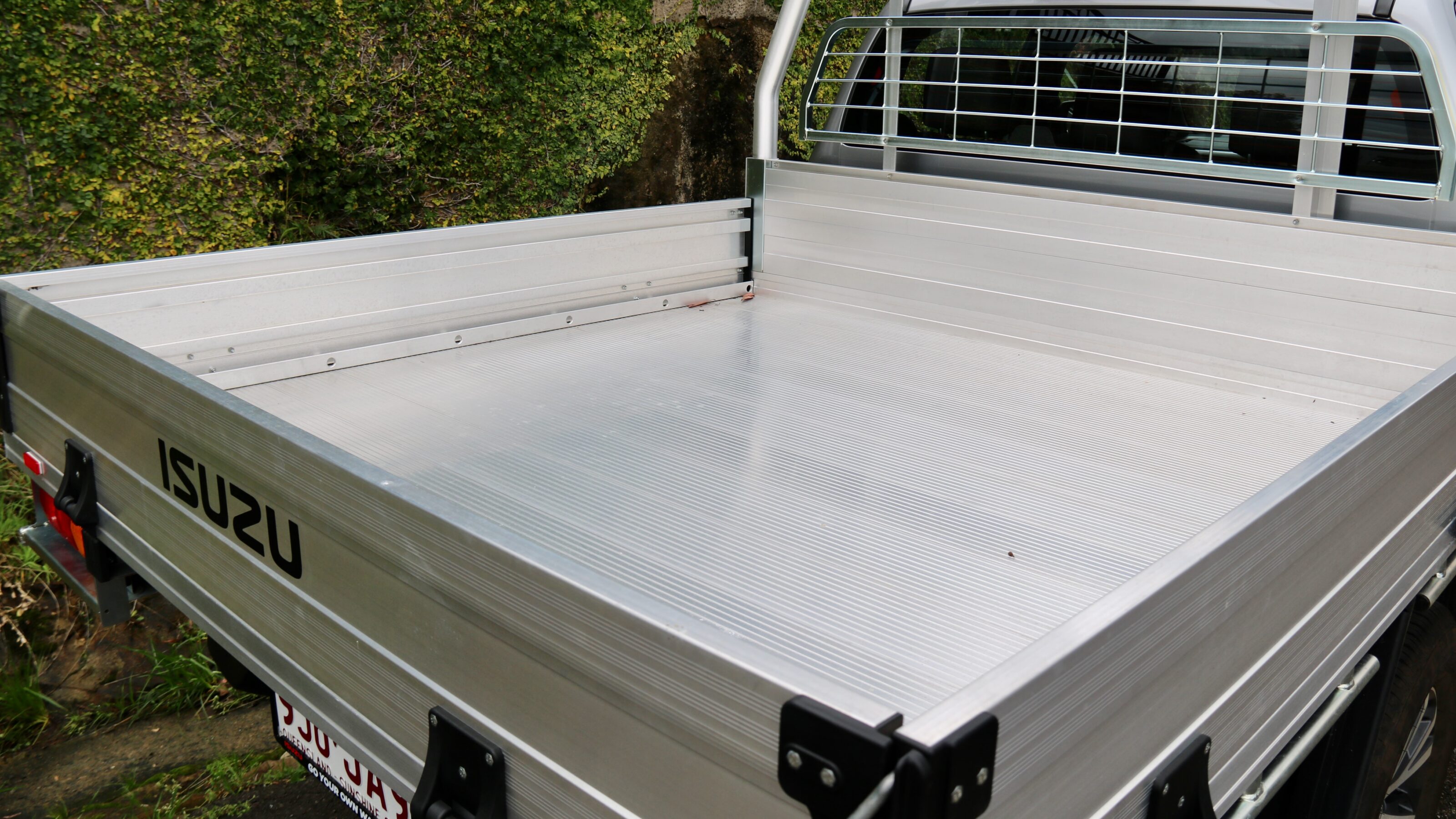
Will I enjoy driving the Isuzu D-Max?
Regardless of whether you’re used to driving a ute or not, the D-Max is a refined and comfortable offering in the ute segment. That’s impressive given its excellent offroad ability, which can pose a compromise in comfort in some competitors but not here.
Around town, the ride comfort can be a touch firm, similar to its competitors, but it’s quiet at speed and an excellent long-distance tourer. The steering offers good feel and is quite light, so that urban driving is easy. Its rear vision is good for a ute thanks to larger mirrors, though there’s no 360-degree camera on any model to help with low-speed manoeuvring.
There are two four-cylinder turbo-diesel engine options in the D-Max range: a 110kW/350Nm 1.9-litre unit in entry-level models, and a larger 140kW/450Nm 3.0-litre sitting above it. Some variants can be had with a six-speed manual but most are equipped with a six-speed automatic, which is a generally intuitive gearbox to use, though a few more gears with tighter ratios would make it better. Both engines will last forever, though some rivals do offer stronger outputs if that’s what you’re after. Refinement is actually better in the smaller, newer engine as it’s quieter but the 3.0-litre is noticeably gruntier and in the real world, returns pretty similar fuel economy to its smaller sibling. The 3.0-litre engine can also tow more at 3,500kg.
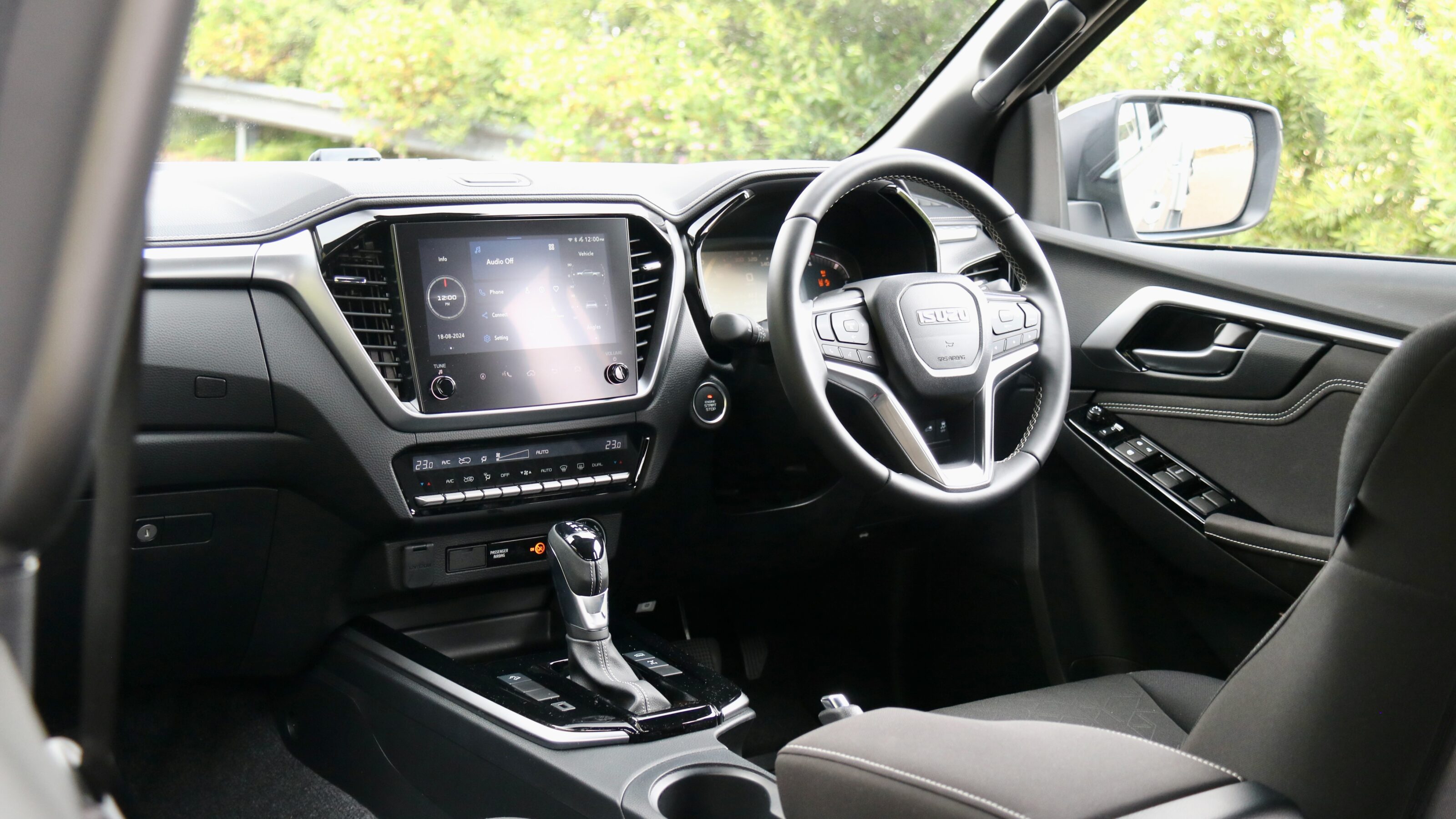
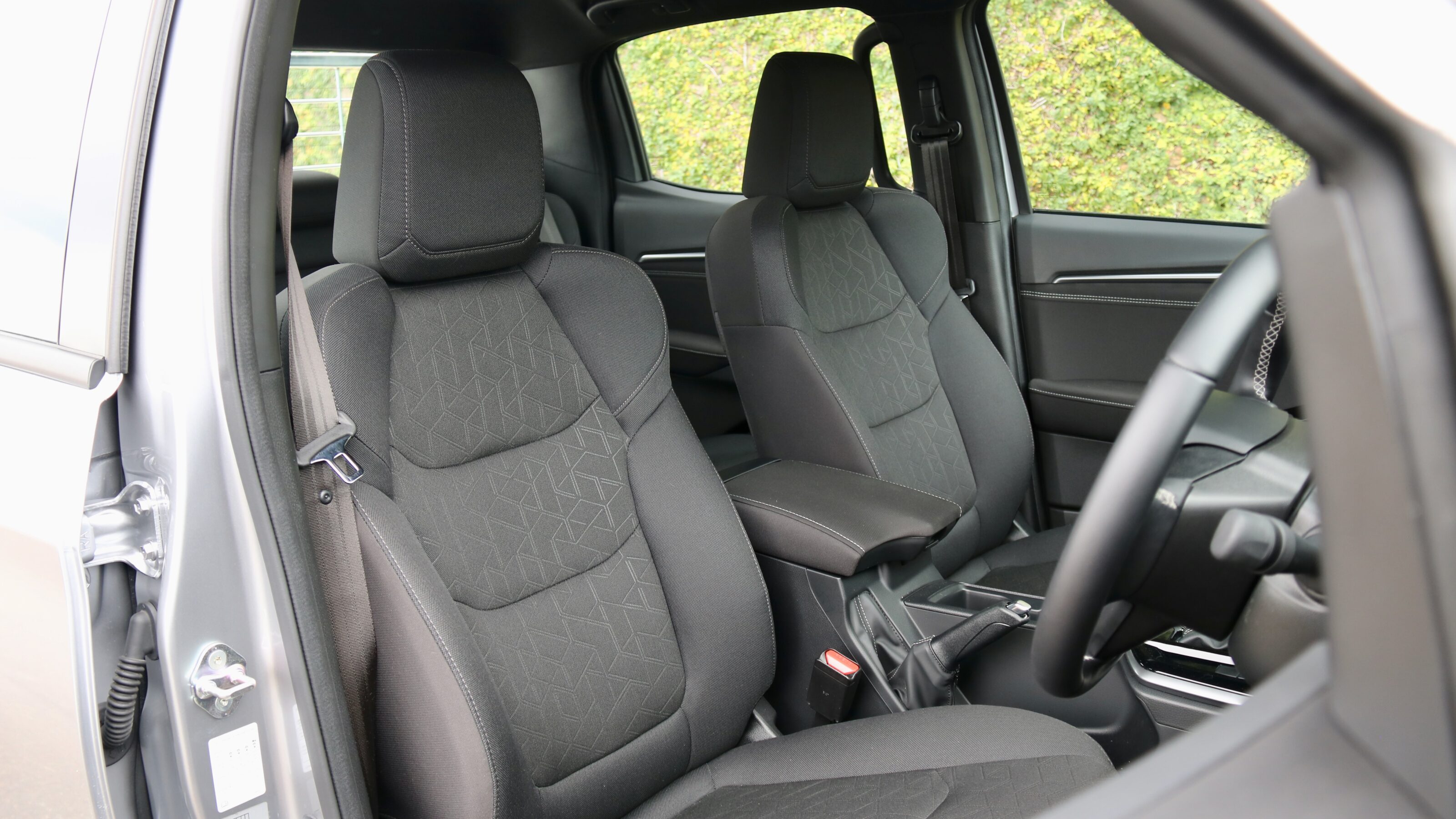
How much does the Isuzu D-Max cost to run?
The claimed combined fuel consumption for the D-Max ranges from 6.7L/100km for 1.9-litre 4×2 variants to 8.0L/100km for 3.0-litre 4x4s, while CO2 emissions range from 177g/km to 207g/km. Those figures, in our experience, aren’t difficult to match and even 3.0-litre 4×4 autos will easily dip under 7L/100km on highway runs. The D-Max range features a 76-litre fuel tank, easily earning drivers more than 1,000km of range in highway driving.
What warranty covers the Isuzu D-Max?
The D-Max is covered by a six-year/150,000km warranty with seven years of roadside assistance, as well as five years of capped price servicing.
Aside from the initial three-month/3,000km free inspection, the D-Max’s service intervals are once-yearly/every 15,000km, and each of the first five services costs $469 each for a five-year/75,000km total of $2,345.
Which Isuzu D-Max should I buy?
It depends on what your preferences are for a ute, but we think that the D-Max X-Rider ($59,500 plus on-road costs) sticks out from the D-Max range because of its value equation. While inside it feels a lot like the LS-M on which it’s based, the exterior stands out because it looks fairly similar to the high-end X-Terrain with its sports bar, LED lighting and gloss black highlights. Otherwise, the X-Terrain itself is currently priced from $67,990 drive away as a permanent special – curiously making it thousands less expensive than lower-spec models like the LS-U+ – and that makes it excellent value for money. At that price, it’s loaded with kit and a great all-rounder.
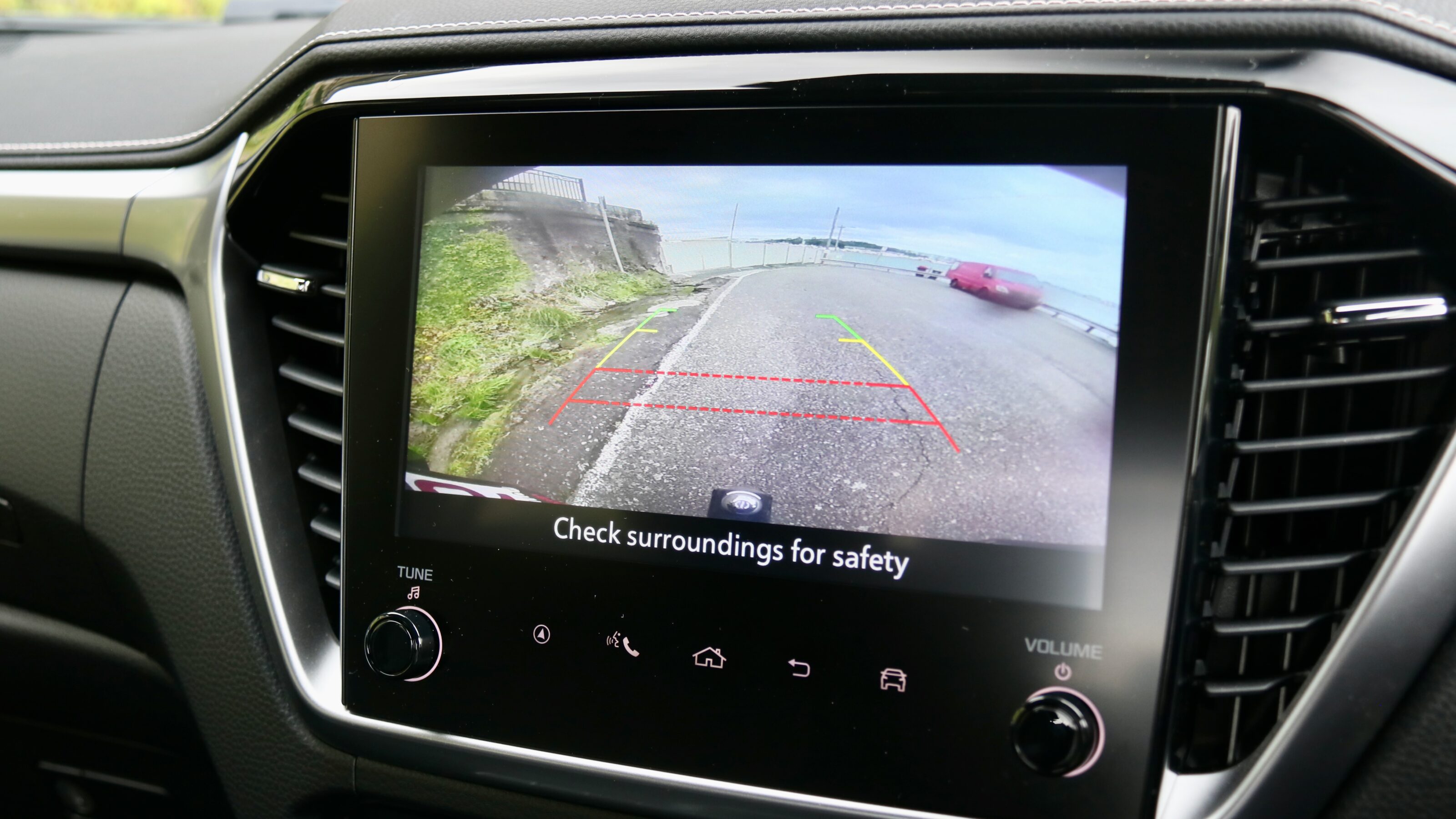
How much does the Isuzu D-Max cost?
As with many rivals, the D-Max range is diverse, covering different bodystyles, tray types, engines, manual or automatic transmissions and various models with differing equipment levels. Current pricing on the range from entry level to the top-spec Blade model are set out below.
- SX Single Cab Chassis 1.9L 4×2 manual: $32,700 ($32,990 drive away permanent special)
- SX Single Cab Chassis 1.9L 4×2 auto: $34,700
- SX Single Cab Chassis 3.0L 4×2 manual High Ride: $34,700
- SX Single Cab Chassis 3.0L 4×2 auto High Ride: $36,700
- SX Space Cab Chassis 3.0L 4×2 auto High Rde: $40,200
- SX Crew Cab Chassis 1.9L 4×2 auto High Ride: $41,200
- SX Crew Cab Utility 1.9L 4×2 auto High Ride: $42,700
- SX Single Cab Chassis 3.0L 4×4 manual: $42,700
- SX Crew Cab Chassis 3.0L auto 4×2 High Ride: $43,200
- SX Single Cab Chassis 3.0L auto 4×4: $44,700
- SX Crew Cab Utility 3.0L auto 4×2 High Ride: $44,700
- SX Space Cab Chassis 3.0L auto 4×4: $48,200
- SX Crew Cab Chassis 3.0L manual 4×4: $49,200
- SX Crew Cab Utility 1.9L auto 4×4: $50,700
- SX Crew Cab Chassis 3.0L auto 4×4: $51,200
- SX Crew Cab Utility 3.0L auto 4×4: $52,700
- LS-M Crew Cab Chassis auto 4×4: $54,300
- LS-U Crew Cab Utility 3.0L auto 4×2 High Ride: $54,500
- LS-M Crew Cab Utility 3.0L auto 4×4: $55,800
- X-Rider Crew Cab Utility auto 4×4: $59,500
- LS-U Space Cab Utility 3.0L auto 4×4: $59,500
- LS-U Crew Cab Chassis 3.0L auto 4×4: $61,000
- LS-U Crew Cab Utility 3.0L auto 4×4: $62,500
- LS-U+ Crew Cab Utility 3.0L auto 4×4: $65,500
- X-Terrain Crew Cab Utility 3.0L auto 4×4: $70,500 ($67,990 drive away permanent special)
- Blade Crew Cab Utility 3.0L auto 4×4: $76,990 (drive away)
What features are standard in the Isuzu D-Max?
- 17-inch steel wheels with Dunlop AT25 tyres
- Three-leaf standard rear suspension (ute) or heavy-duty rear suspension (cab chassis)
- Dusk-sensing automatic halogen headlights
- Rain-sensing automatic wipers
- Remote keyless entry
- Urethane steering wheel/gear selector/handbrake
- Vinyl floor
- Cloth upholstery
- 4.2-inch driver’s display
- 8.0-inch touchscreen
- Wired and wireless Apple CarPlay and Android Auto smartphone mirroring
- AM/FM/DAB+ digital radio
- Four-speaker sound system
- 2x USB-C ports (1x in single cab and space cab)
- USB-A port for dashcam
- Manual single-zone air-conditioning
D-Max safety equipment:
- Eight airbags (including a front centre unit)
- Autonomous emergency braking (AEB) with pedestrian, cyclist and turn assist
- Misacceleration assist (auto only)
- Blind-spot monitoring with rear cross-traffic alert (with braking)
- Driver attention monitoring
- Forward collision warning
- Lane-departure warning
- Lane-keep assist
- Adaptive cruise control with stop and go functionality
- Traffic sign recognition
- Intelligent speed limit assistance
- Auto high beam
- Driver attention monitoring
- Reversing camera
The D-Max range was awarded a five-star ANCAP rating in 2022 with scores of 86 percent for adult occupancy protection, 89 percent for child occupancy protection, 69 percent for vulnerable road user protection and 84 percent for safety assist.
LS-M model adds:
- 17-inch alloy wheels
- Three-leaf standard rear suspension (ute models)
- Bi-LED headlights
- LED front fog lights
- Rear parking sensors (ute models)
- Body-coloured mirrors, door handles and tailgate handle
- Body-coloured mirrors, door handles and tailgate handle
- ‘High-grade cloth upholstery
X-Rider model adds:
- Gloss black 17-inch alloy wheels
- Black grille
- Black front underbody spoiler
- Black rear step bar
- Black mirrors, door handles and tailgate handle
- Black interior door handles
- Dark grey and black interior door trims
- Piano black steering wheel spoke trims
- Black headlining
- Black sports bar
LS-U model adds:
- 18-inch alloy wheels with Bridgestone 684II HT tyres
- Tow bar receiver
- Tub liner (ute models)
- Silver side steps
- Chrome door handles and tailgate handle
- Electric-folding and heated mirrors
- Keyless entry with push button start with walk away locking
- LED tail-lights
- 7.0-inch digital instrument cluster
- 9.0-inch touchscreen infotainment system
- Six- (space cab) or eight-speaker sound system (dual cab)
- Inbuilt satellite navigation
- 3x USB-C ports (2x in space cab)
- Dual-zone automatic climate control
- Auto-dimming rear-view mirror
- Leather steering wheel and gear selector
- Soft-touch door trims and centre console armrest
- Carpet flooring
- Driver’s electric lumbar adjustment
- Tyre pressure monitoring
LS-U+ model adds:
- Heated front seats
- Leather upholstery
- 10-way electric driver’s seat
- Four-way electric front passenger seat
X-Terrain model adds:
- 18-inch matte grey alloy wheels
- ‘X’ badging on tailgate
- Matte black roller tonneau cover
- Dark grey metallic aero sports bar
- Dark grey metallic sidesteps, mirrors, door handles, tailgate handle, roof rails, front and rear underbody spoilers and fender flares
- Leather upholstery with red stitching
- Remote engine start
- Front parking sensors
Blade model adds:
- Black 17-inch wheels with 275/65R17 Goodyear Wrangler Duratrac RT all-terrain tyres
- Black badging
- Blade-specific front grille with integrated 112-watt lighter
- Blade-specific front bumper and wheel arches
- Side steps
- Sports bar
- Monroe twin-tube shock absorbers
- Suspension lift
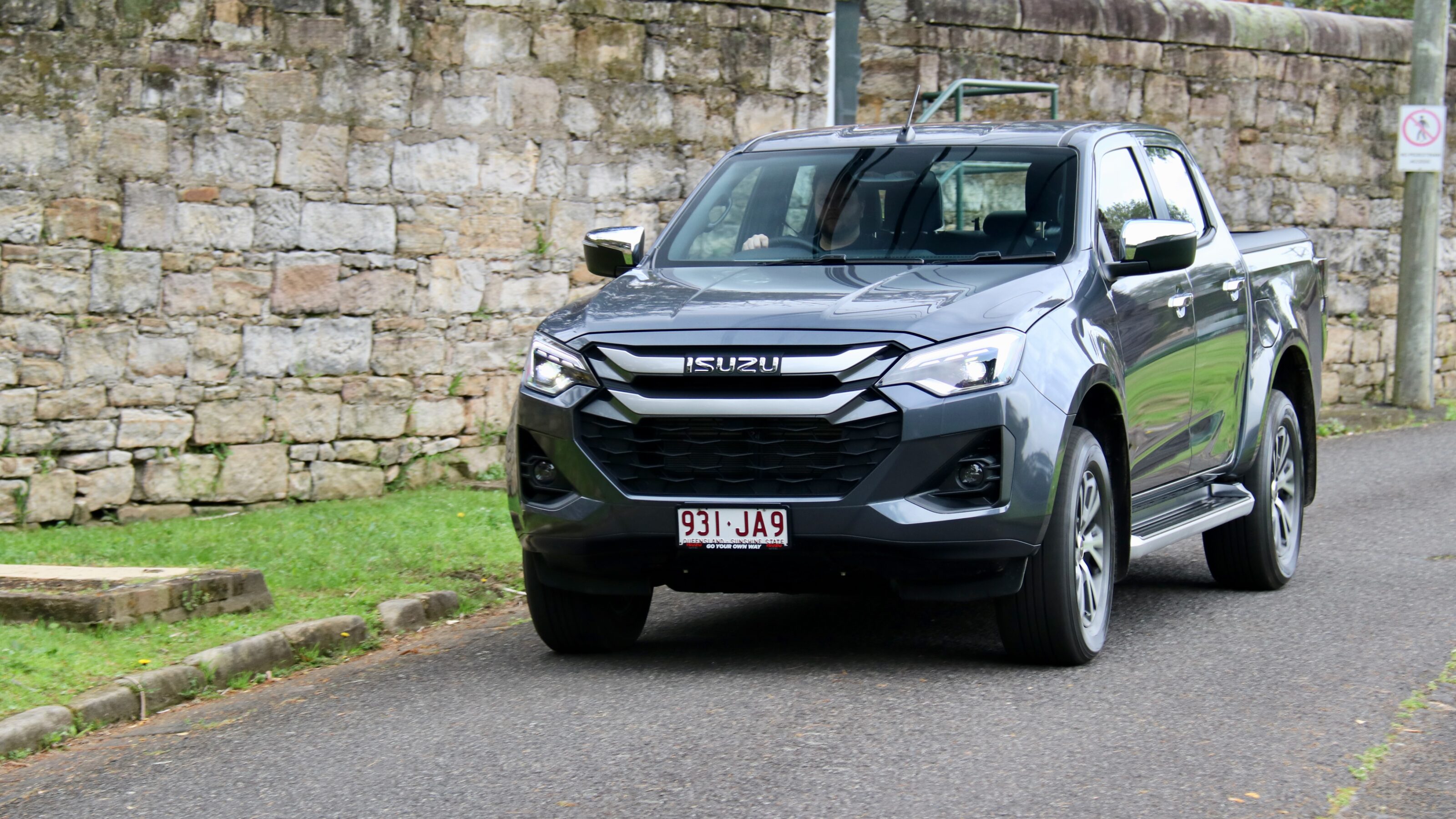
Which utes rival the Isuzu D-Max?
Arguably the chief gripe of those who deride the whole idea of electric vehicles is that the batteries which power them are both exorbitantly expensive and unreliable.
While the truth of either reservation is increasingly debatable, what is true is that it’s very important for an EV owner to know the best ways to look after the battery because failing to do so can both reduce your range on a single charge and, ultimately, your vehicle’s value. Most EVs now use lithium-ion batteries, which lose capacity over the course of their lives and can be expensive to replace. Read on for some tips on how to treat your EV’s battery with some care…
Limit use of rapid chargers: On the face of it charging the vehicle as fast as possible is an appealing idea in these time-poor times, but it’s best not to do this on a regular basis. DC fast chargers are useful when you have limited time to charge, but standard AC chargers are better for your battery’s performance and longevity.
DC fast charging above 22kW puts a strain on your EV battery, resulting in it degrading quicker over time, decreasing your car’s range and putting you in the frame for an expensive battery replacement sooner rather than later.
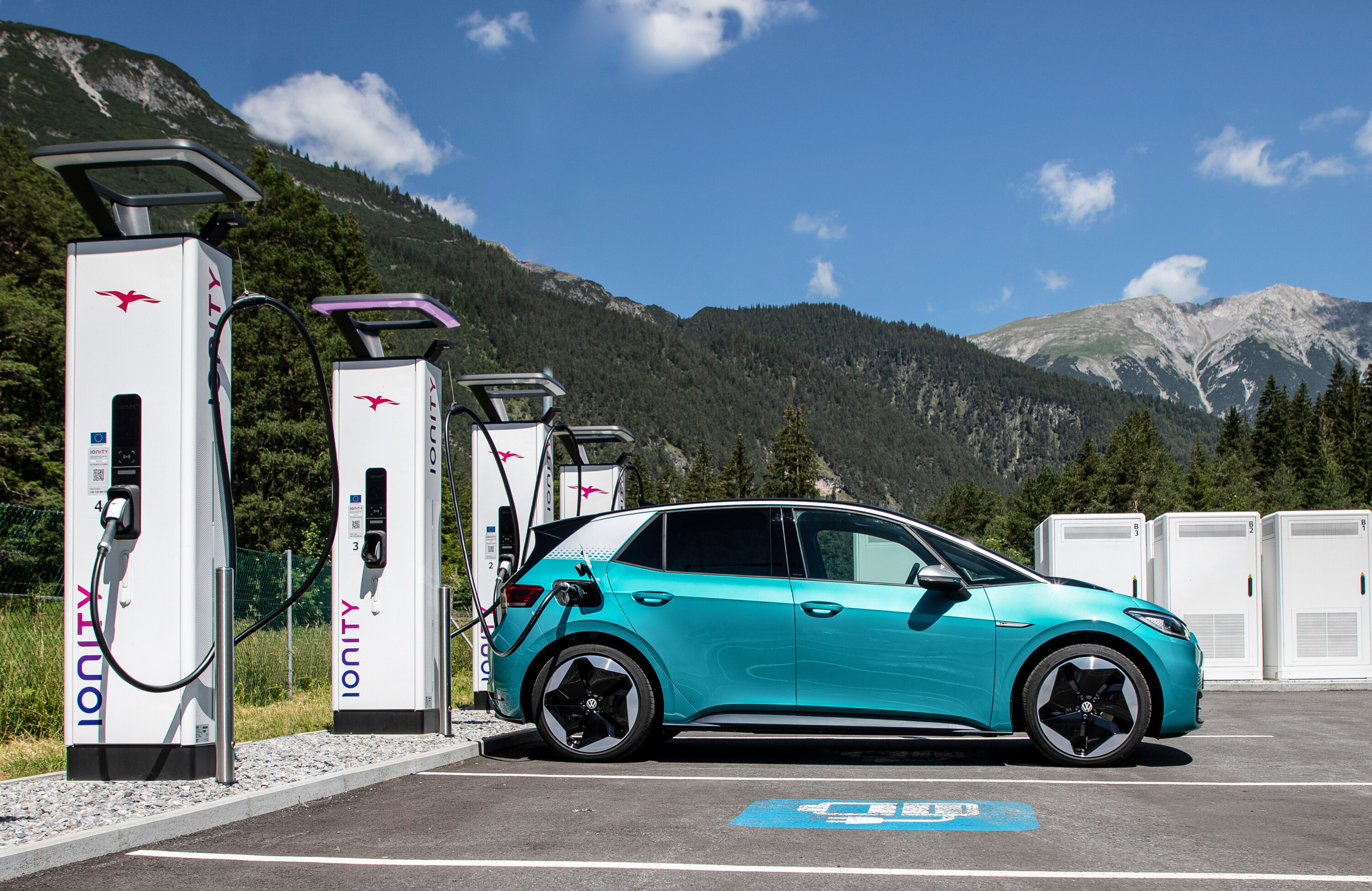
Keep the battery charged between 20% and 80%: One reason that batteries in the mobile phones we carry around with us last only a few years is that they are constantly being pushed to their maximum capacity through repetitive charging then draining – it’s actually one of the worst things you can do to lithium batteries because of battery degradation.
Because these vehicles are expected to last far longer than a smartphone, charging only to 80 percent is a great option to maximise battery life. This will also allow for regenerative braking to be added to the battery. On the flip side, letting the battery fall below 20 percent regularly will result in the battery performance dropping over time, increasing range anxiety.
Minimise exposure to extreme temperatures: Exposing a vehicle to extreme hot or cold temperatures over a prolonged period is never a great idea, but when you’re dealing with an EV, those extremities can shorten the battery pack’s lifespan.
It’s true that EVs have a thermal management system to help with temperature, but it’s best not to work the system too hard. In our hot and sunny Australian climate, try and park in the shade so that the thermal management system isn’t running all day trying to cool the battery down.
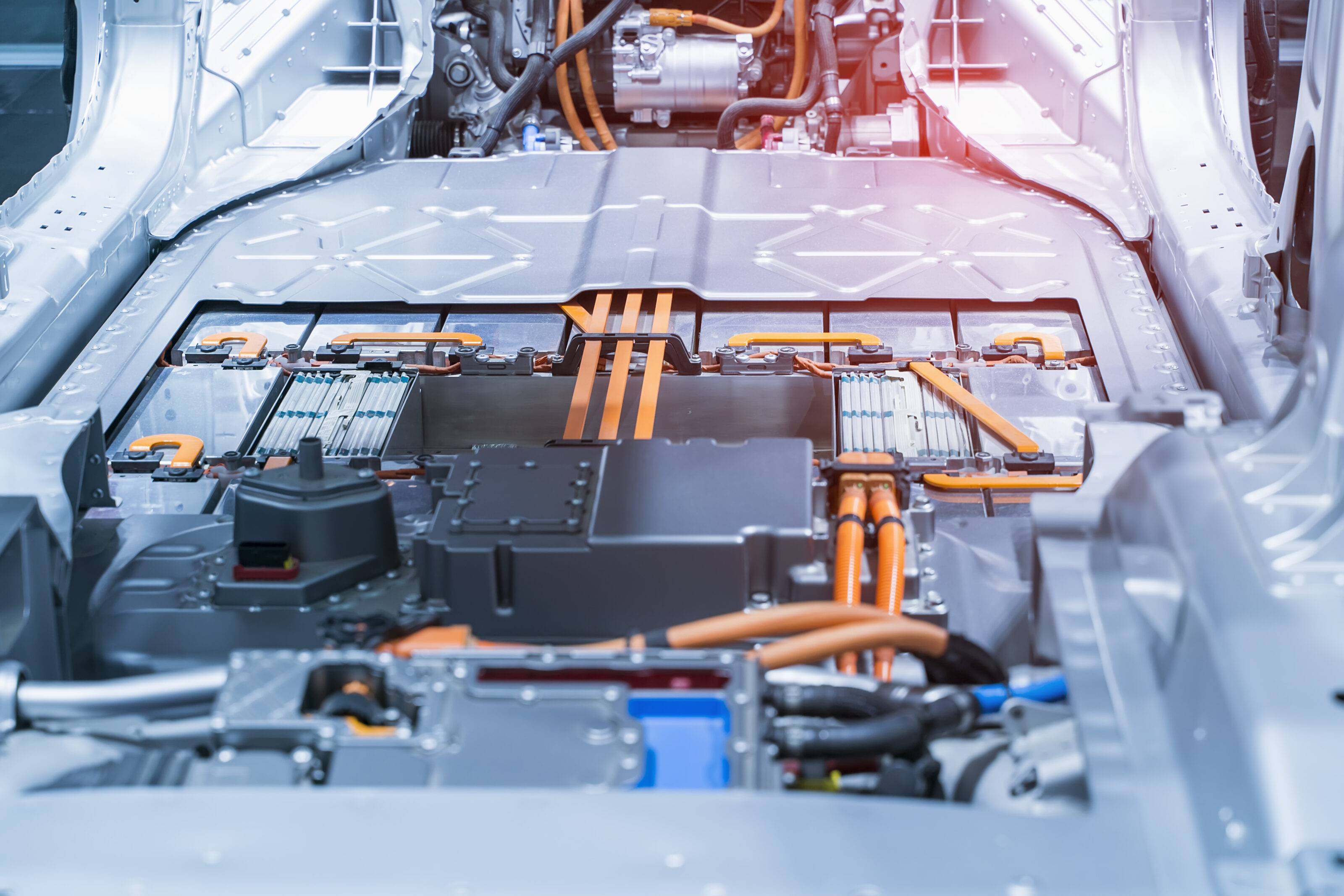
Allow the battery to cool before charging: Let your EV cool before you start charging it. If your EV has a battery pre-conditioning feature, it’s always best to use that before charging – especially rapid charging – to best prepare the battery for the surge of power. That way, the car can cool the battery to optimum temperature to avoid battery damage and facilitate a quicker re-charge.
Ideally, you should charge your car at the coolest time of day to take care of the battery. Perhaps consider a smart EV charger, which can be set to charge when the temperature is at its most moderate.
Don’t charge every single night: If you can, avoid charging your electric car’s battery every day because frequent charging cycles from zero to 100 per cent can cause the battery to degrade, especially if you use rapid chargers often.
Instead, only charge when needed, from minimum 20 percent, for example. Of course, that’s not always feasible but not charging every day will maintain the battery’s life for longer.
Trying to adhere to the above general rules will ensure that your EV’s battery will last as long as possible. But if it needs replacement, what warranty covers batteries?
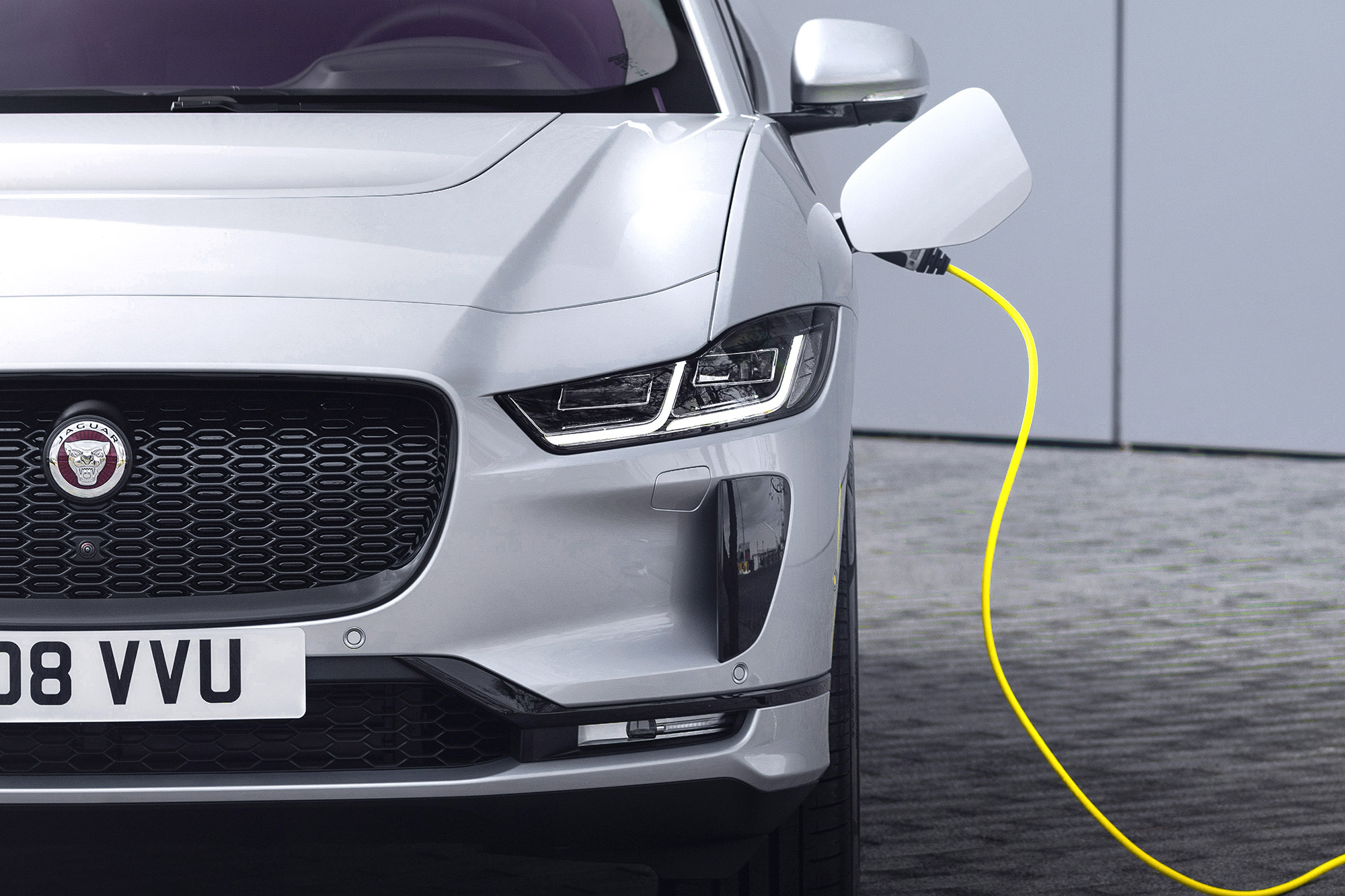
Warranties and replacements: The general EV battery warranty – not to be confused with the 12-volt unit – across all manufacturers in Australia is eight years or 160,000km (whichever comes first). Depending on the manufacturer, that warranty generally covers the battery to 70 percent capacity and is transferable if sold to another owner.
Some brands offer higher coverage, such as MG, which covers its new cars with a 10-year/250,000km warranty, while Toyota will cover its batteries for 10 years if an annual battery health check is performed at a Toyota dealership.
If the battery does fail outside of warranty, how much will it cost to replace? According to research by Recurrent in 2023, the rate of battery failure in EVs is just 1.5 percent out of 15,000 cars surveyed, and that was improving, but if a replacement is needed the cost depends on the car, the battery size and the battery type.
Since the original mass market EVs in 2012 – like the Nissan Leaf and Mitsubishi I-Miev – lithium-ion battery prices have fallen sharply from over US$400/kWh to US$111/kWh or AU$177/kWh (at the end of 2024), though LFP cells made by CATL and BYD were seen as low as $56/kWh.
Using the industry average battery size of around 80kWh, the approximate cost to replace the battery – plus labour and other fees – is approximately AU$14,200 in early 2025. While that’s not a small amount, it’s significantly less expensive than in 2012 where a replacement of the same size would have cost over $50,000.
Considering the cost of replacement, it’s worthwhile to follow some of the tips above to enhance your EV’s battery life, preserve its range and keep your EV’s value as high as possible. In reality, batteries covered by long warranties in Australia are lasting longer than expected and replacement costs have been coming down significantly. All of which adds up to a potentially easier ownership experience for EV buyers in the future.
BYD is celebrating back-to-back record sales months in Australia with 4,811 vehicles sold in March thanks to new product like the Sealion 7 electric SUV and Shark 6 PHEV ute.
According to VFACTS, Australia’s national vehicle sales report, the brand’s 4,811 sales result marks a 100 per cent increase in year-on-year figures and a big increase on the 3,281 sales of the month before it.
In particular, the new Shark 6 plug-in hybrid ute sold strongly with 2,810 registrations or 58 per cent of the company’s March sales with buyers taking delivery before the FBT exemption on plug-in hybrids ended on April 1.

The new Sealion 7 electric SUV’s 573 sales in March was positive and a big improvement on the 157 deliveries from the month before.
In total, 8,767 BYDs have been registered in Australia this year and the brand recently celebrated its 40,000th local sale.
“The momentum is undeniable,” Head of Marketing at BYD’s Australian importer EVDirect, Kate Hornstein said. “Following two recent launches, we’ve achieved a remarkable 196% increase compared to March 2024—surpassing category growth and reinforcing the strength of the brand and product strategy. These launches have further cemented BYD’s place in Australian automotive culture, and this record-breaking March result is a testament to the growing trust in BYD”.
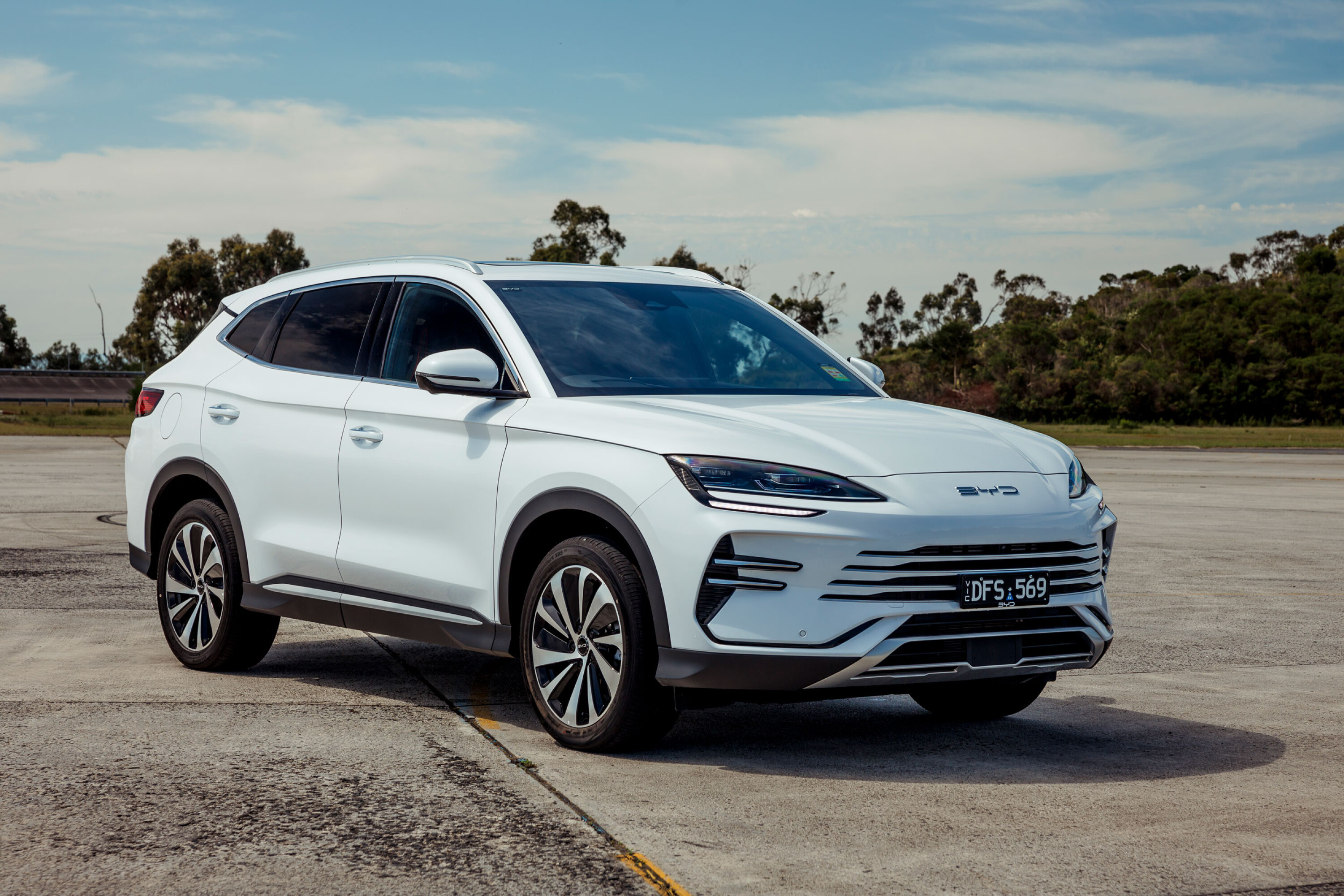
BYD Australian sales March 2025:
- Atto 3: 358
- Dolphin: 86
- Seal: 196
- Sealion 6: 790
- Sealion 7: 573
- Shark 6: 2,810
Did you buy a new BYD in March 2025? Let us know in the comments below.
Hyundai has revealed the heavily facelifted Ioniq 6 electric sedan, while also teasing and confirming a high-performance N variant.
Revealed alongside the wild Insteroid concept car at the Seoul Mobility Show, the mid-life update for the Ioniq 6 has been given an all-new front end that’s more aggressive than the current model and also fits in with the brand’s latest design language.
The styling at the rear has also been revamped with a new integrated ducktail spoiler, redesigned bumpers and on the N Line, black colouring.
Both the regular Ioniq 6 and the sportier-looking Ioniq 6 N Line (below) were revealed, with the N Line joining the range for the first time.
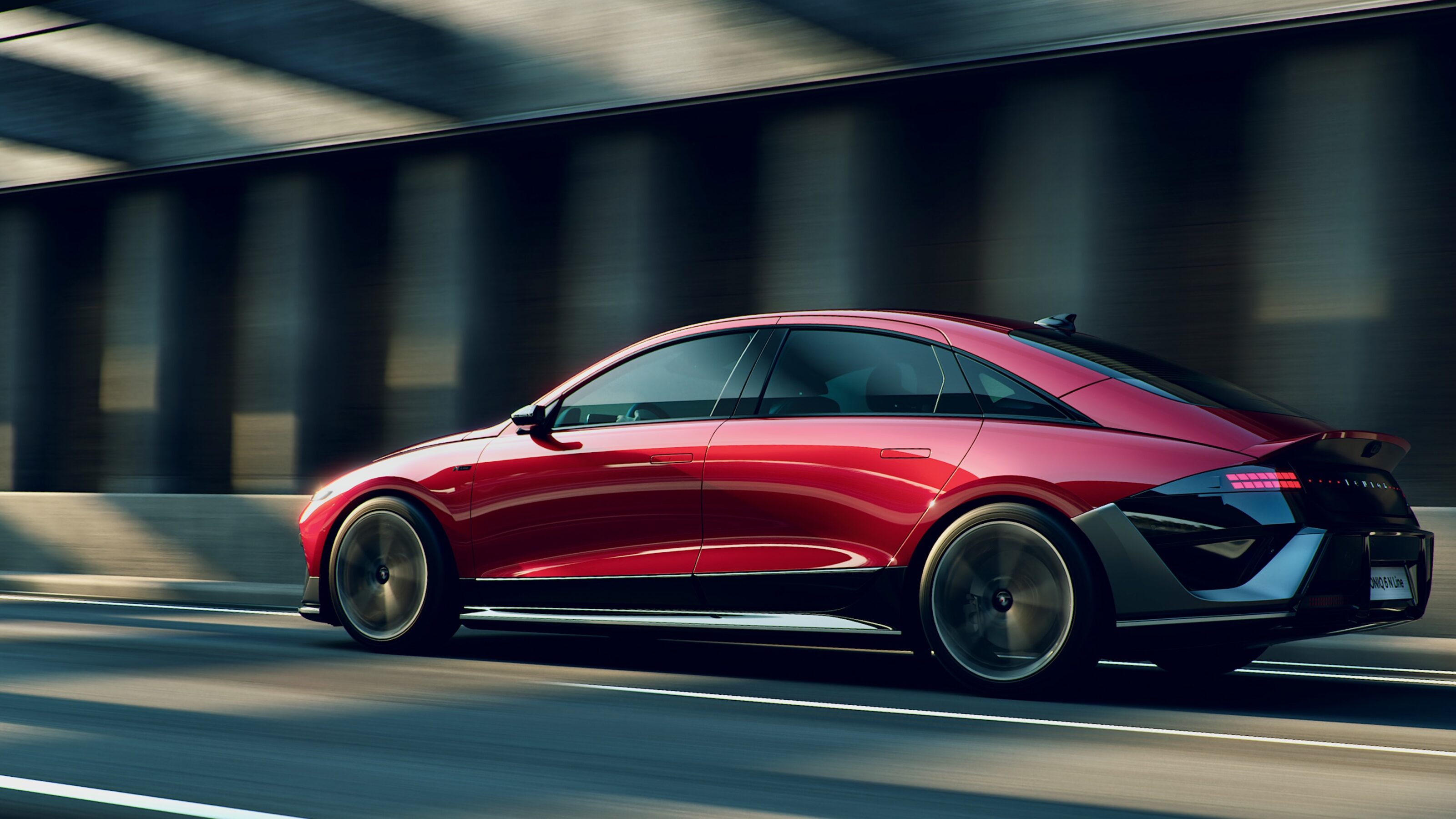
Inside, the changes to the Ioniq 6 (below) are less noticeable but the company says that it’s been given a new steering wheel design, a revised centre console, a larger climate control display and even new door trim pieces for a higher quality feel.
Technical changes are yet to be detailed for the new Ioniq 6, but the current model is offered with a 77.4kWh lithium-ion battery and either a 168kW/350Nm rear-drive or 239kW/605Nm dual-motor all-wheel drive set up.
The recently updated Ioniq 5 SUV upgraded the battery to a larger 84kWh unit, something we predict will reach the Ioniq 6, and its maximum 614km range will likely grow further as result.
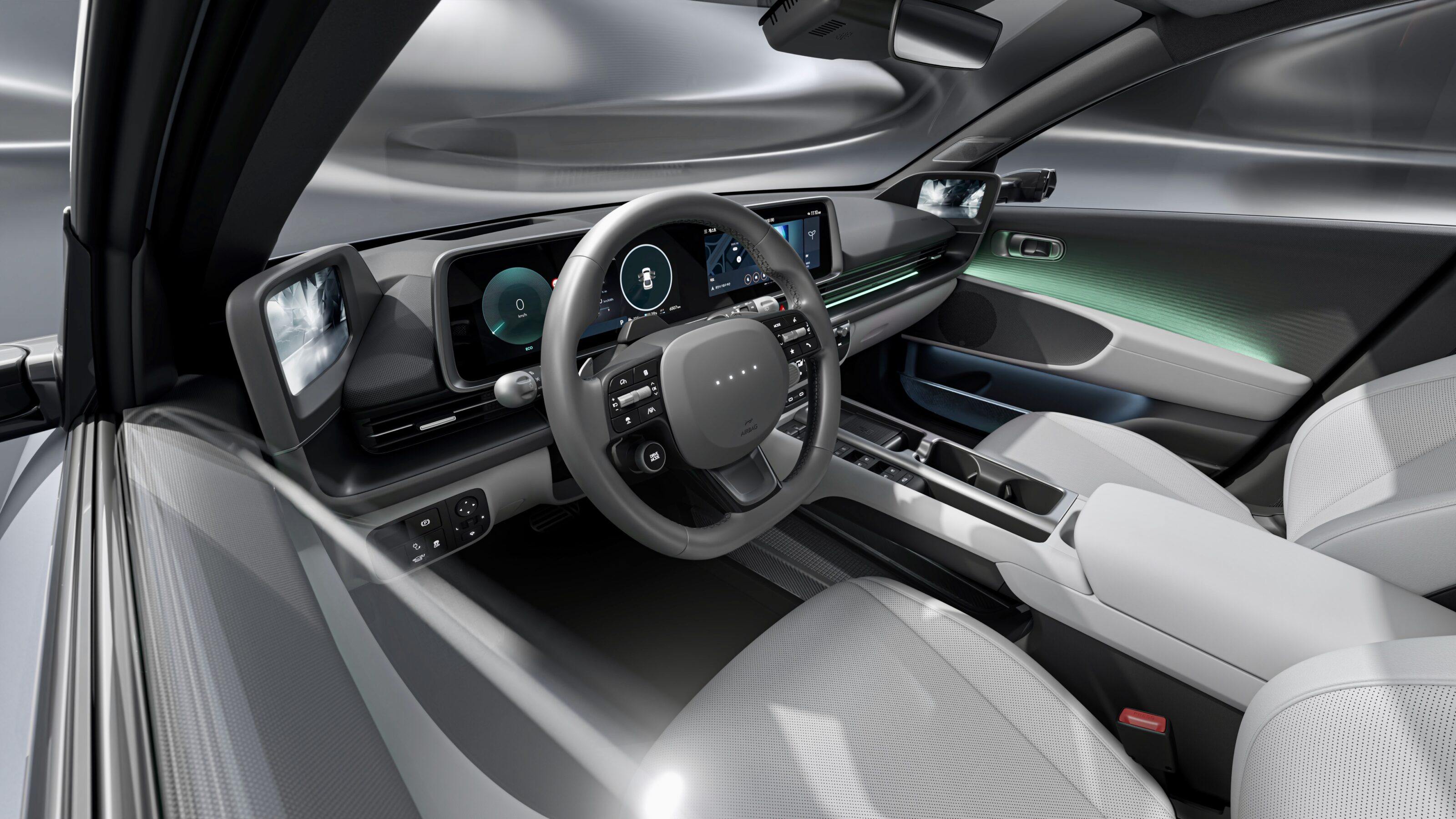
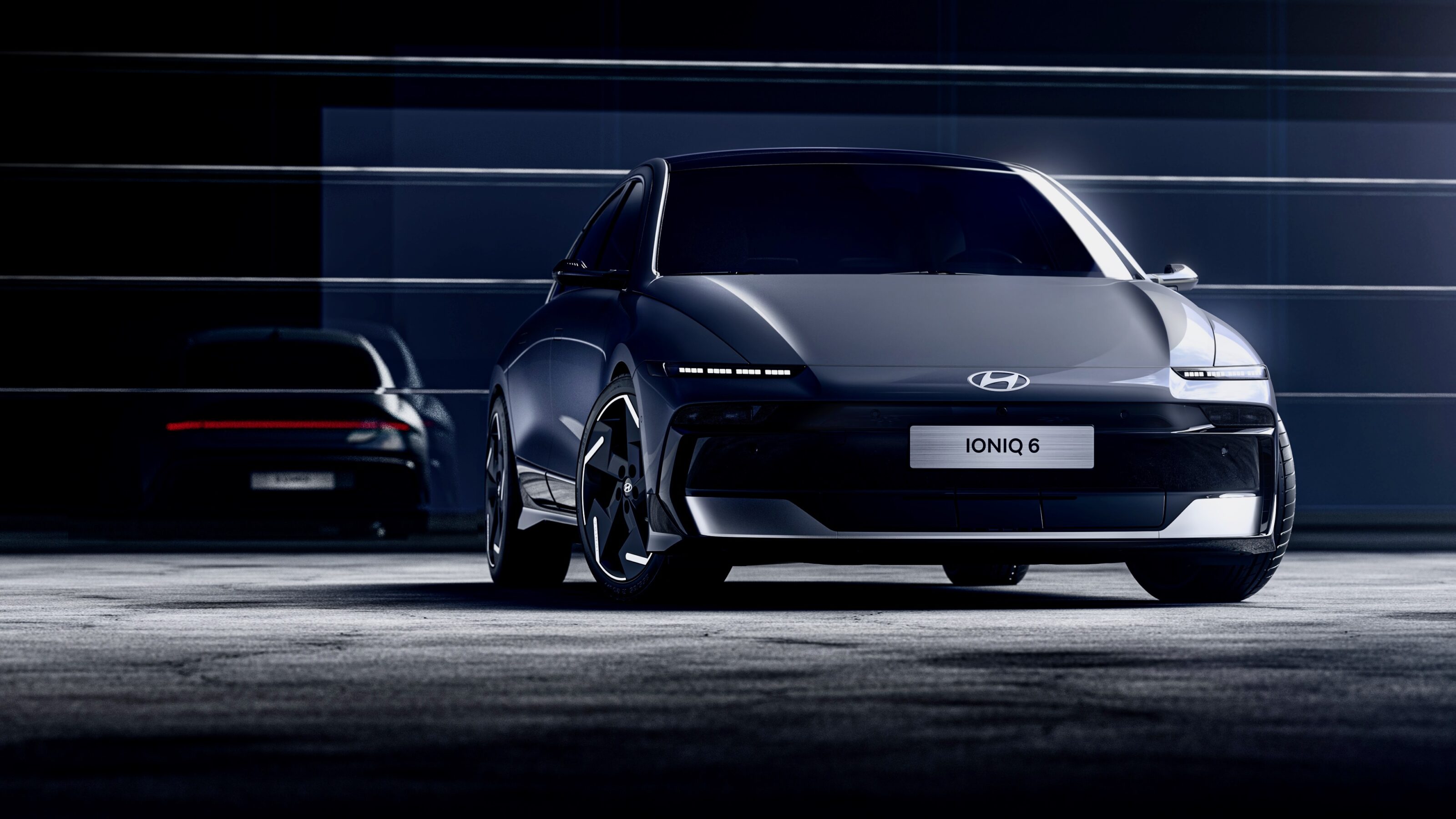
While the Ioniq 6 N is yet to be fully revealed – that will happen in July, according to Hyundai – it can be seen in one of the images with a cheeky rear shot showing off its spoiler. We expect its performance to out-do the Wheels COTY-winner Ioniq 5 N thanks to its lower ride height and potential for even more thrust.
Hyundai Australia is yet to confirm when the facelifted Ioniq 6 range will go on sale locally, though it’s likely to be towards the end of 2025.